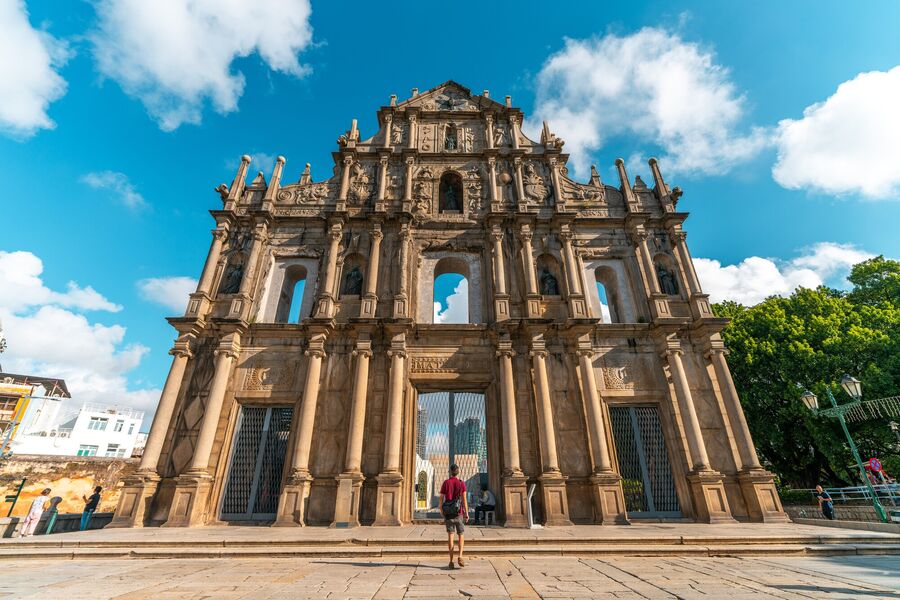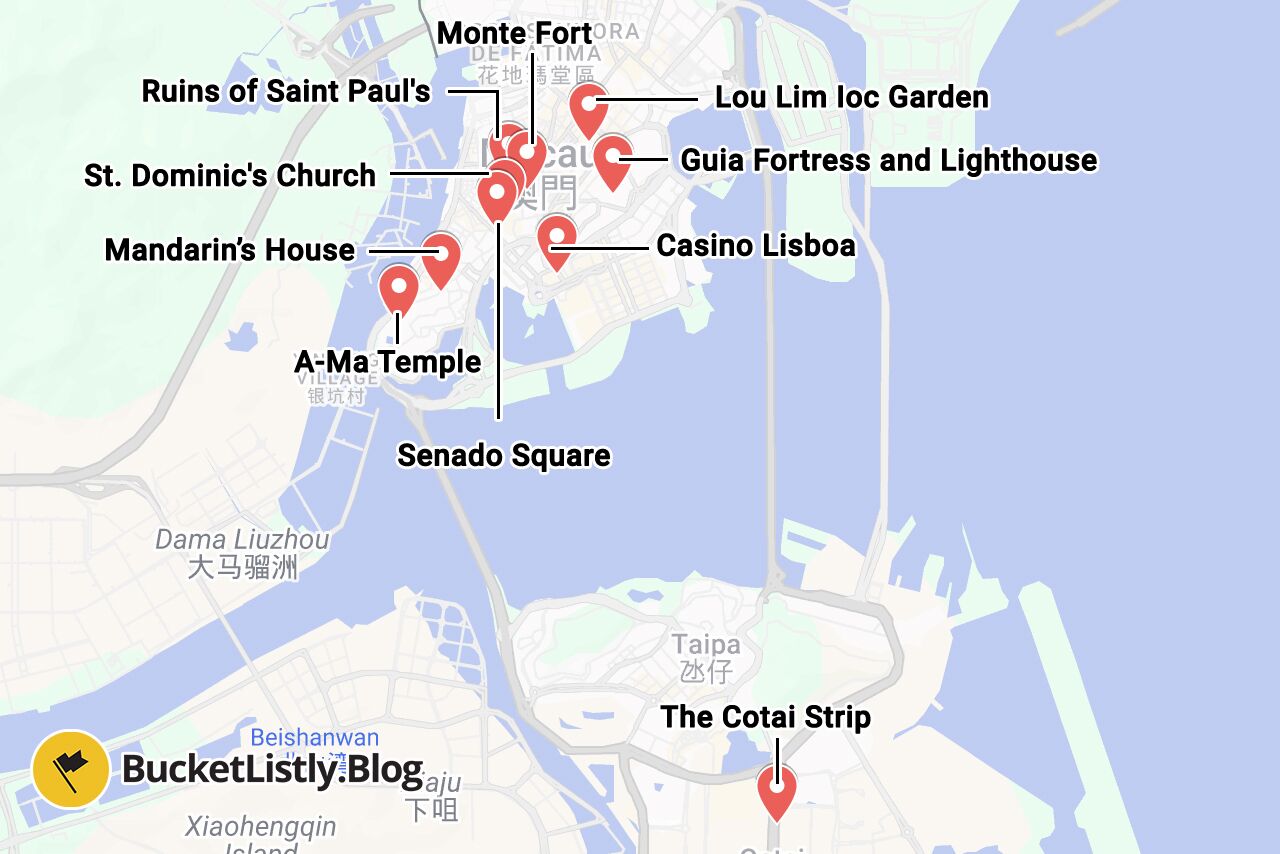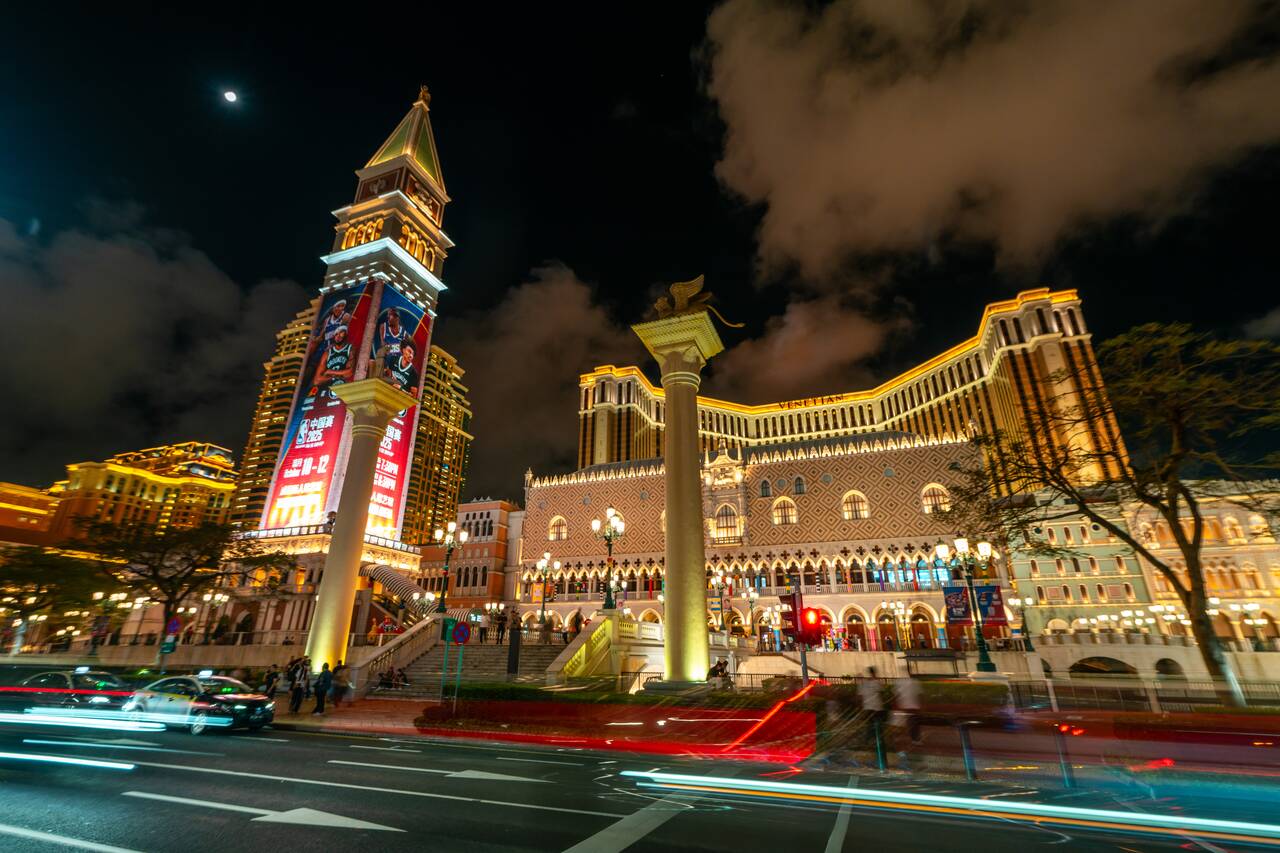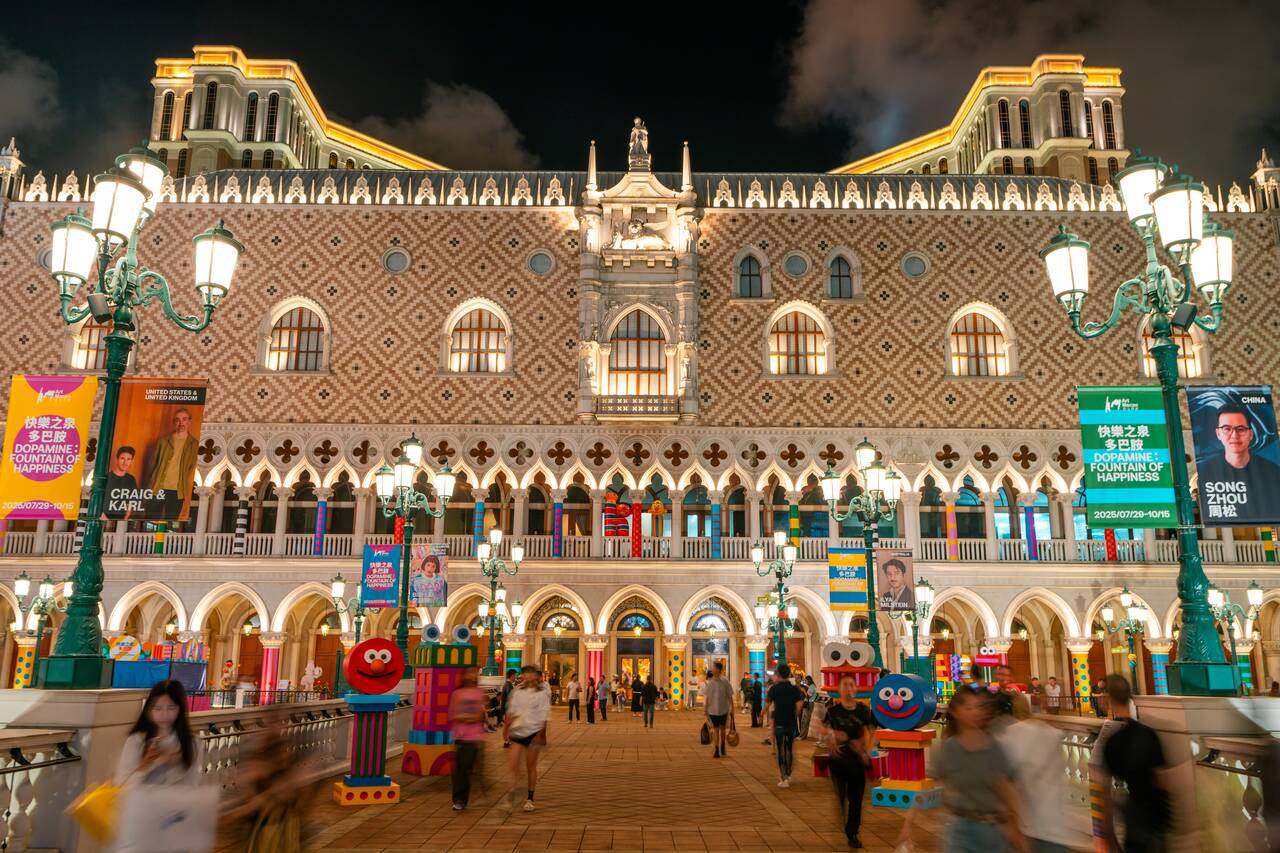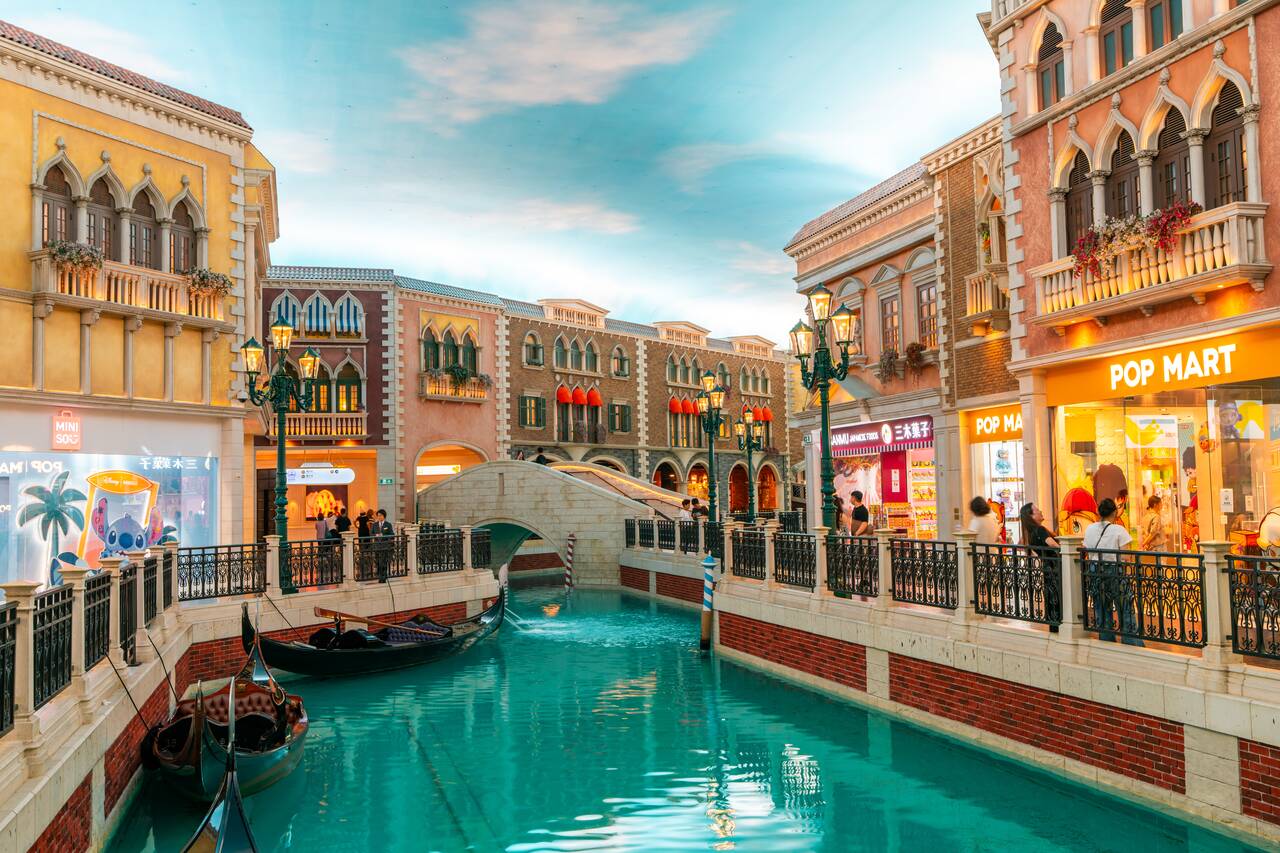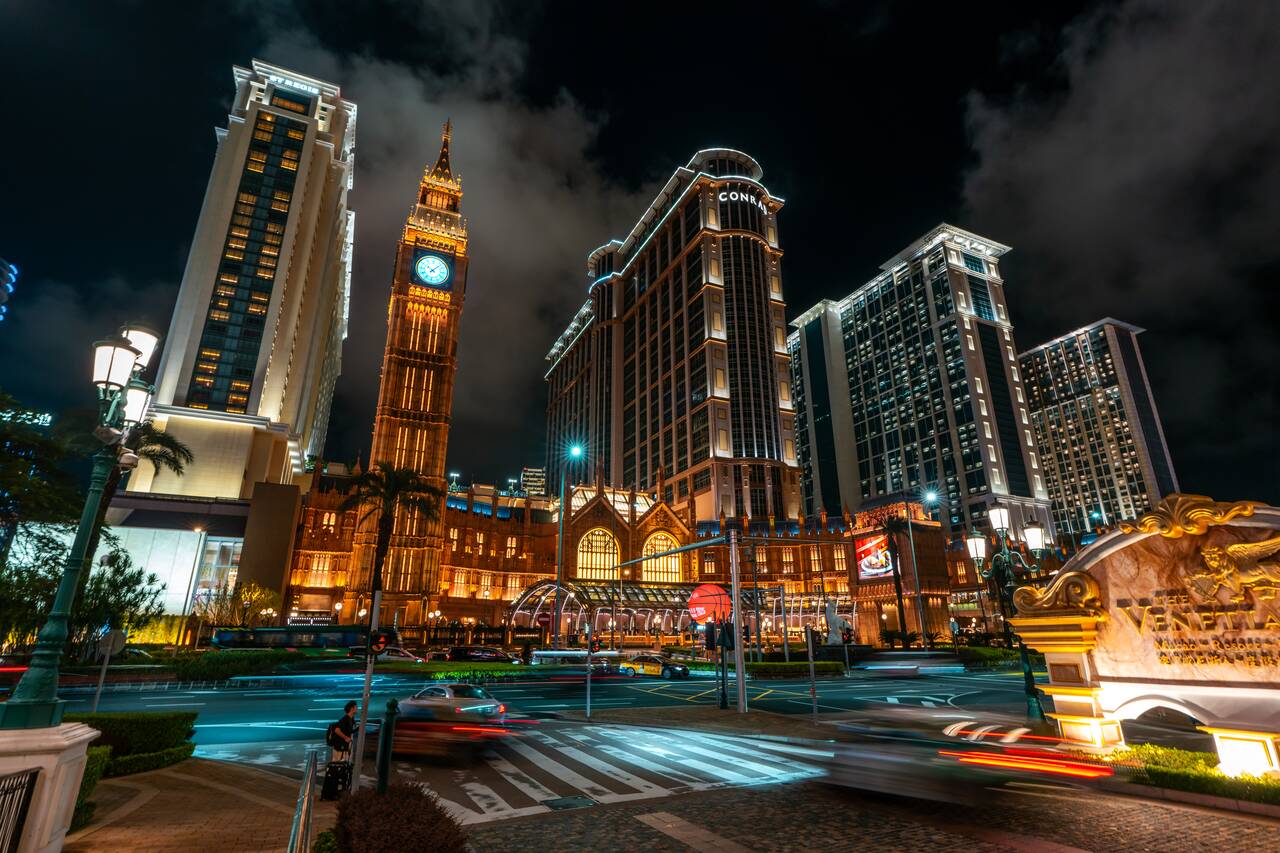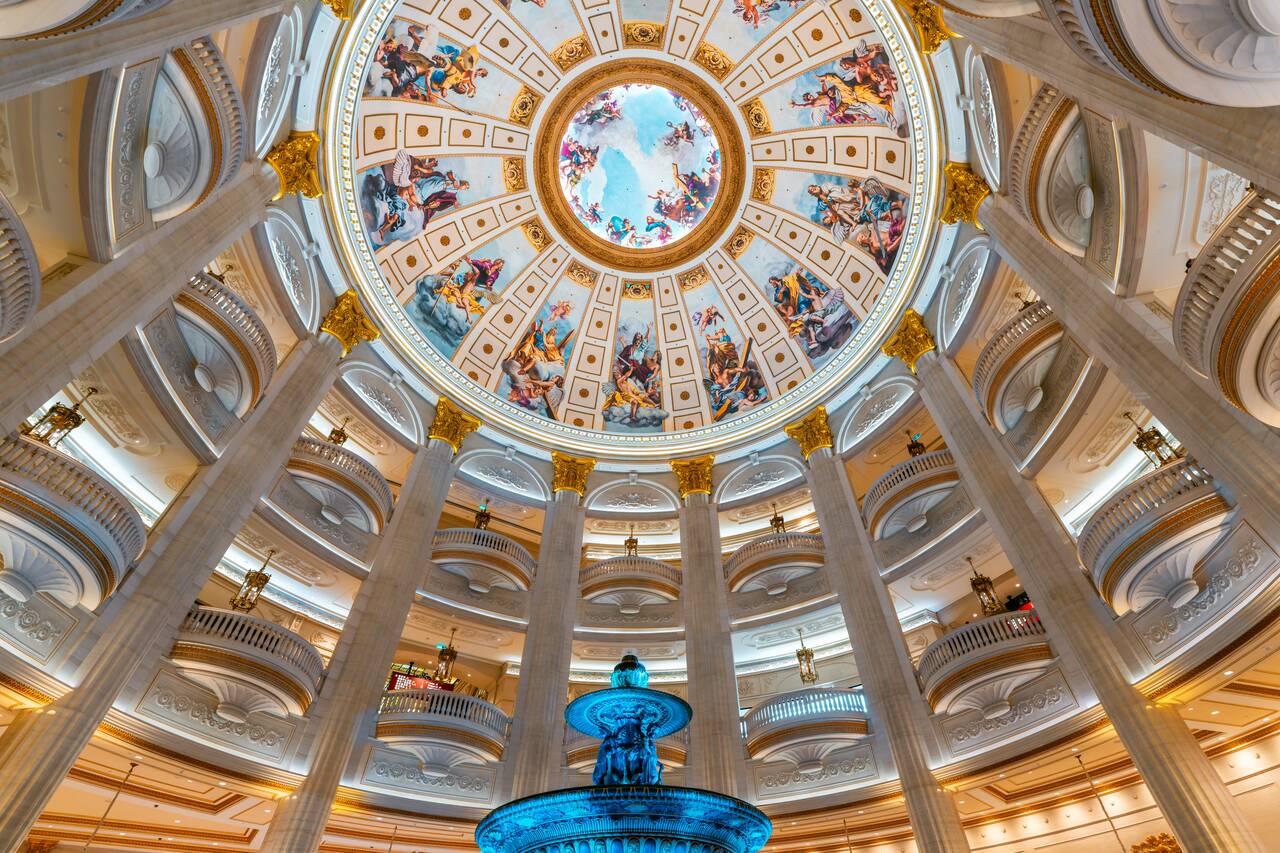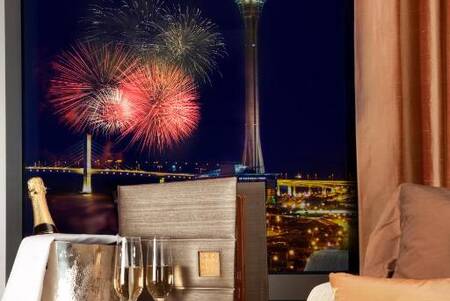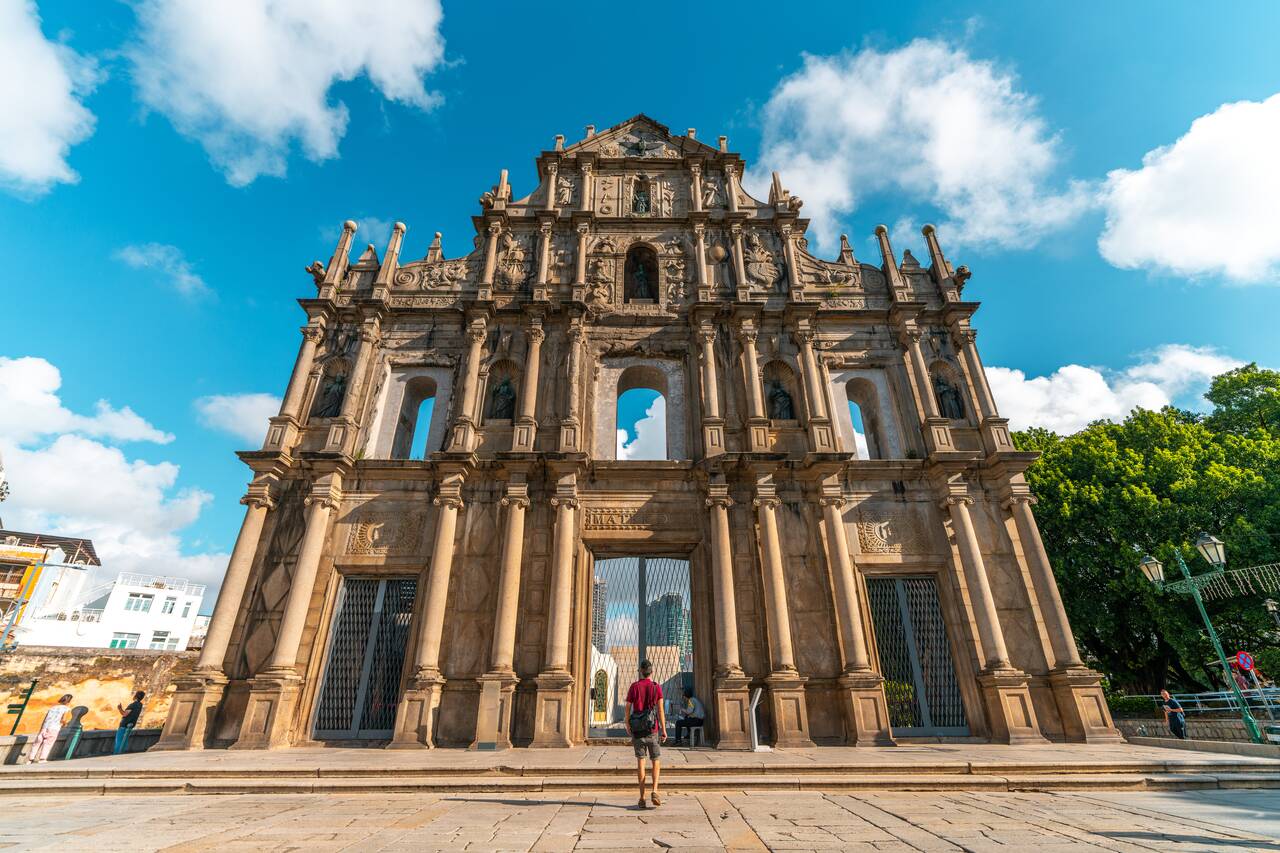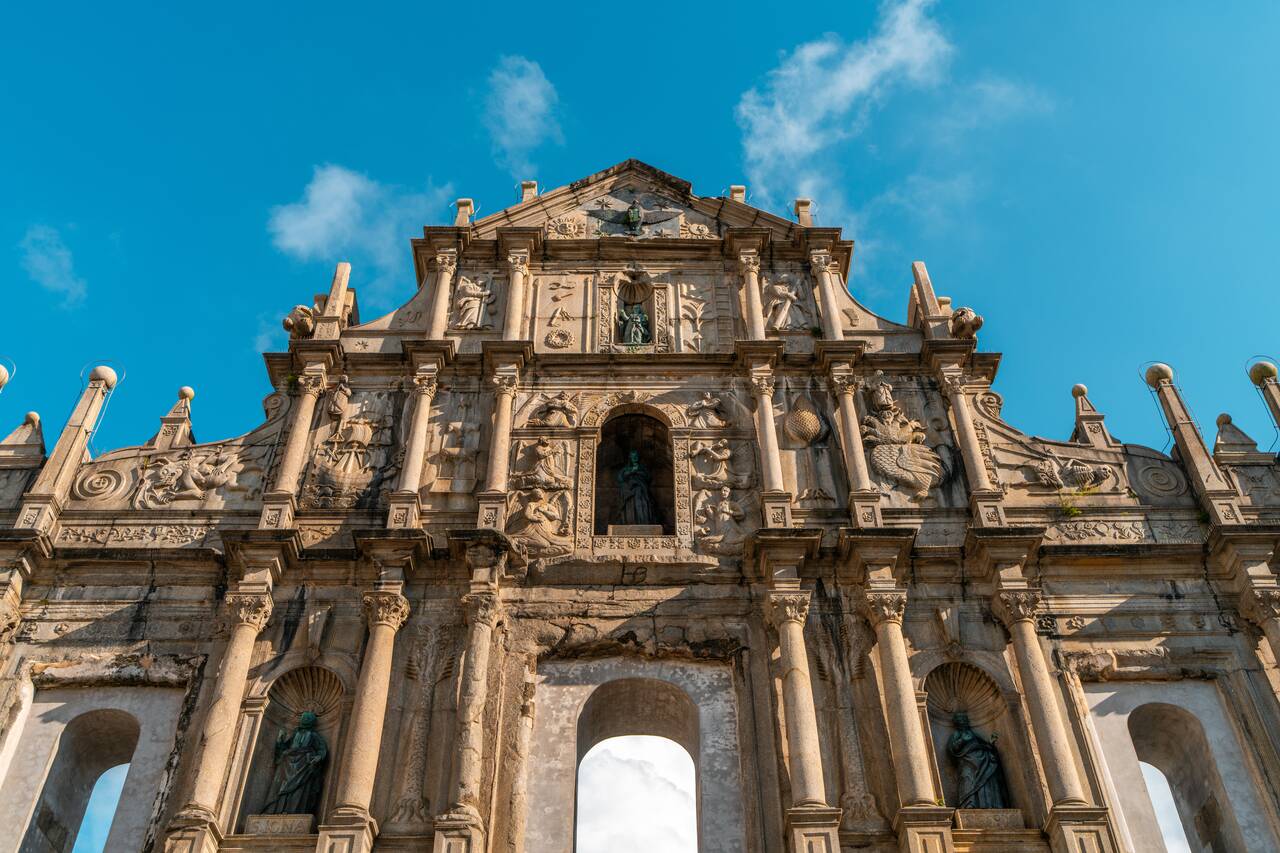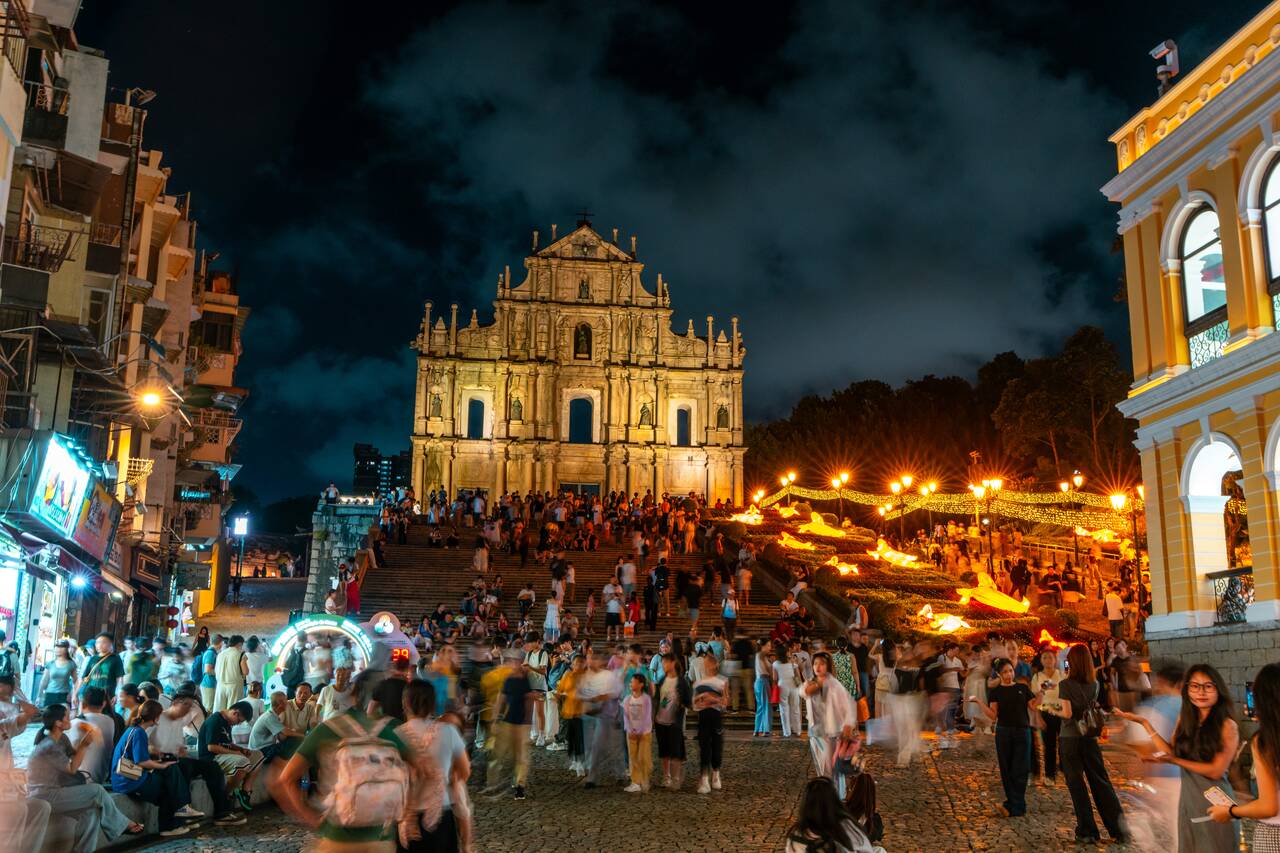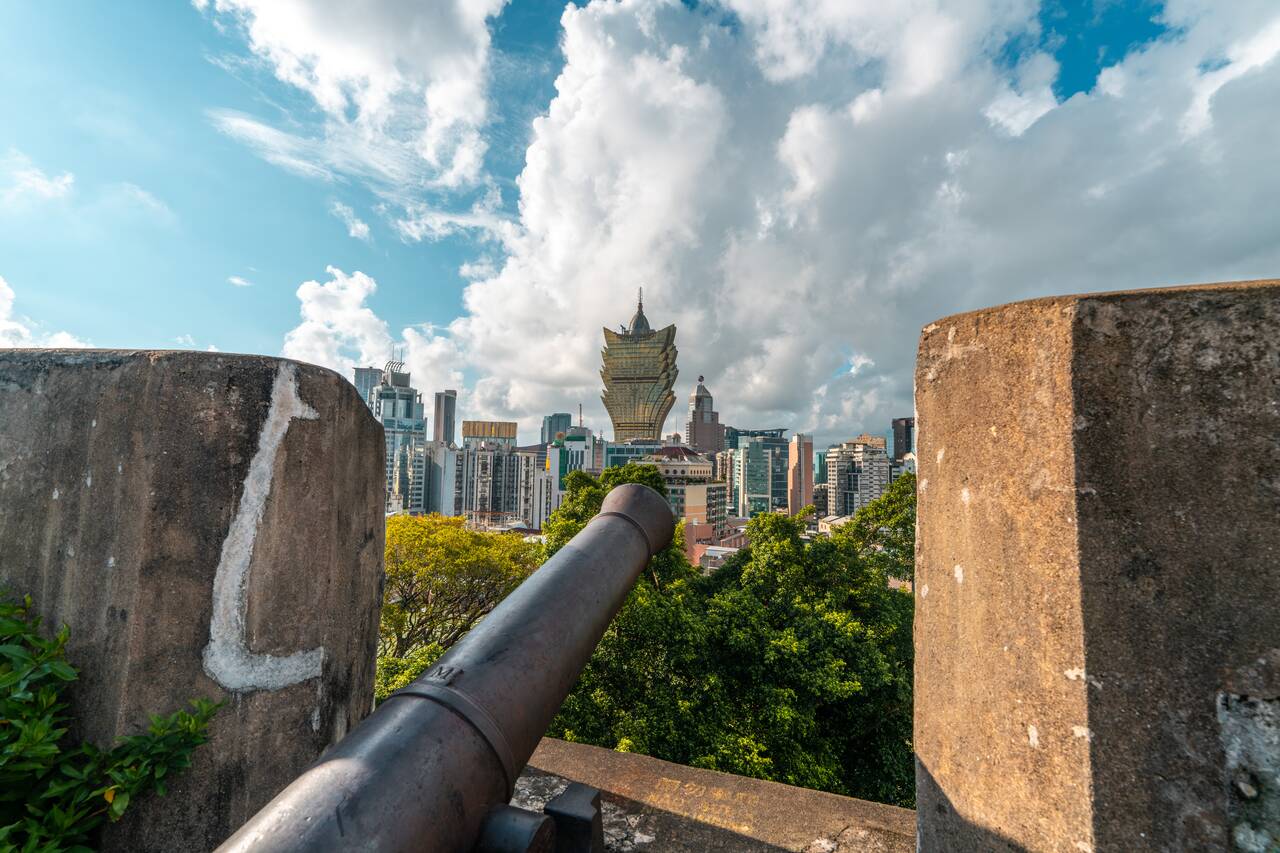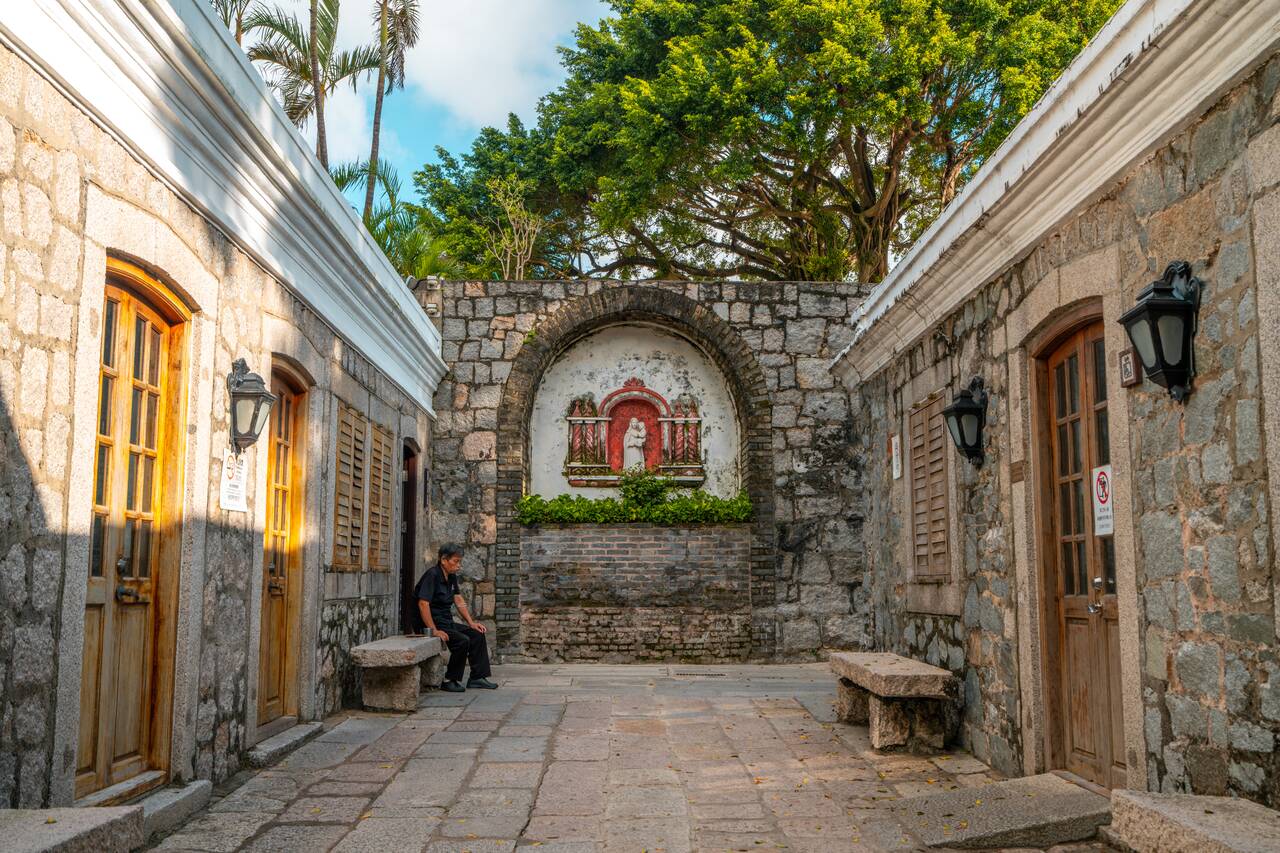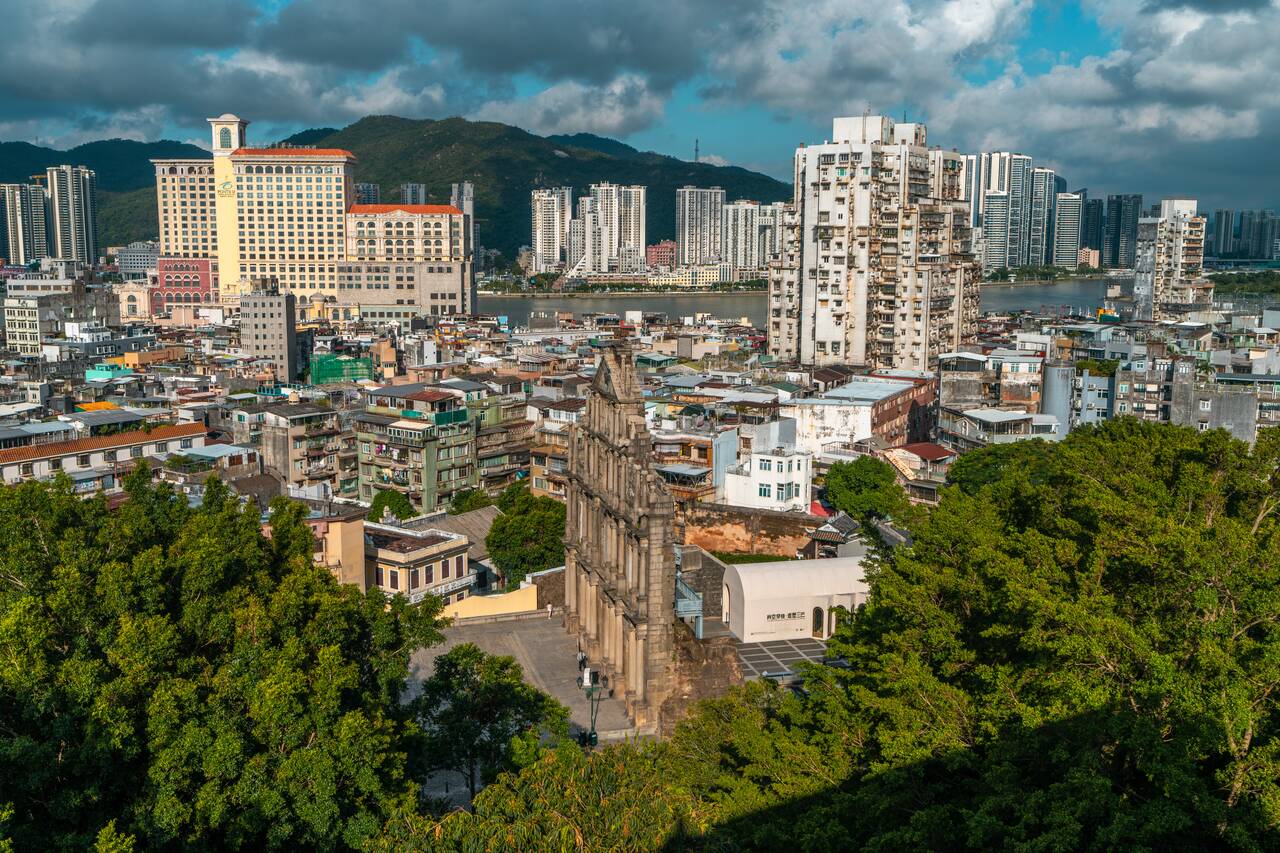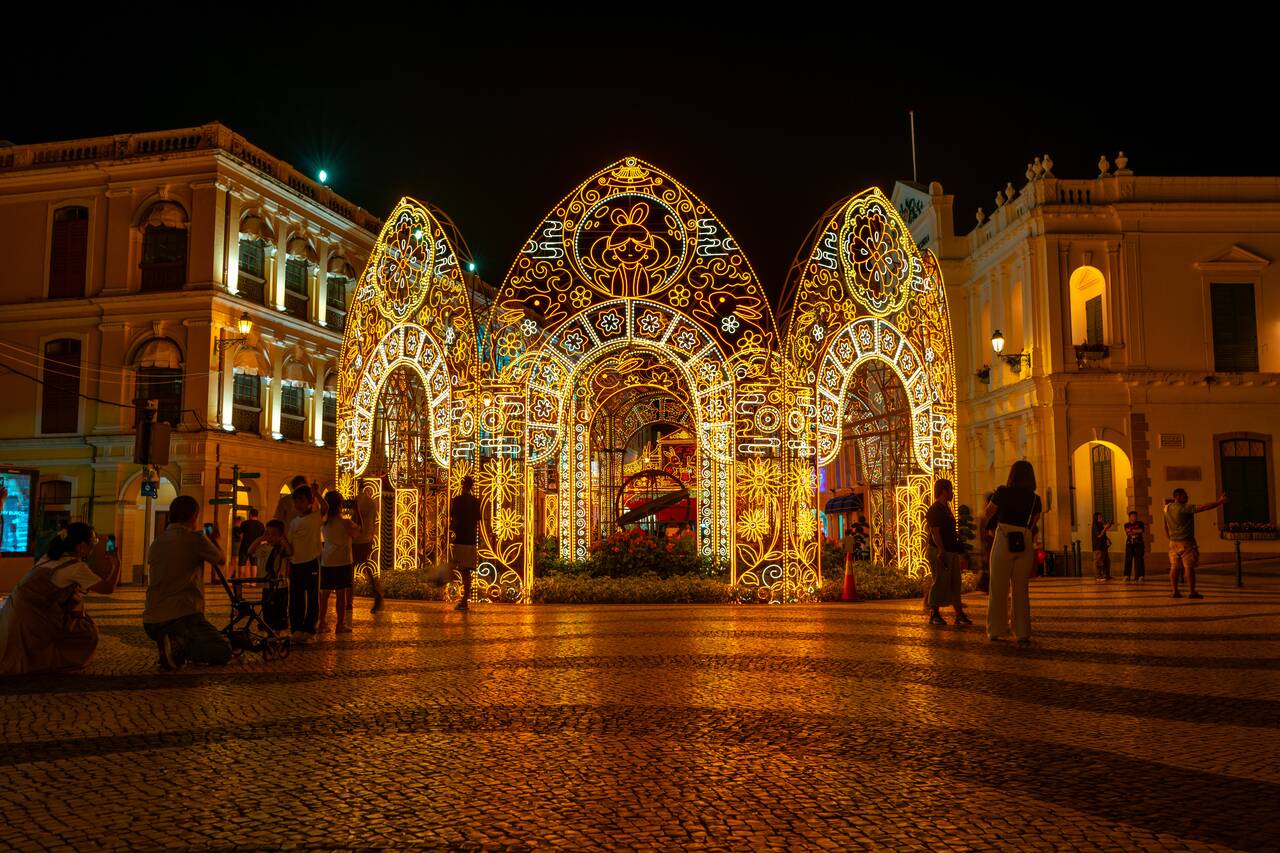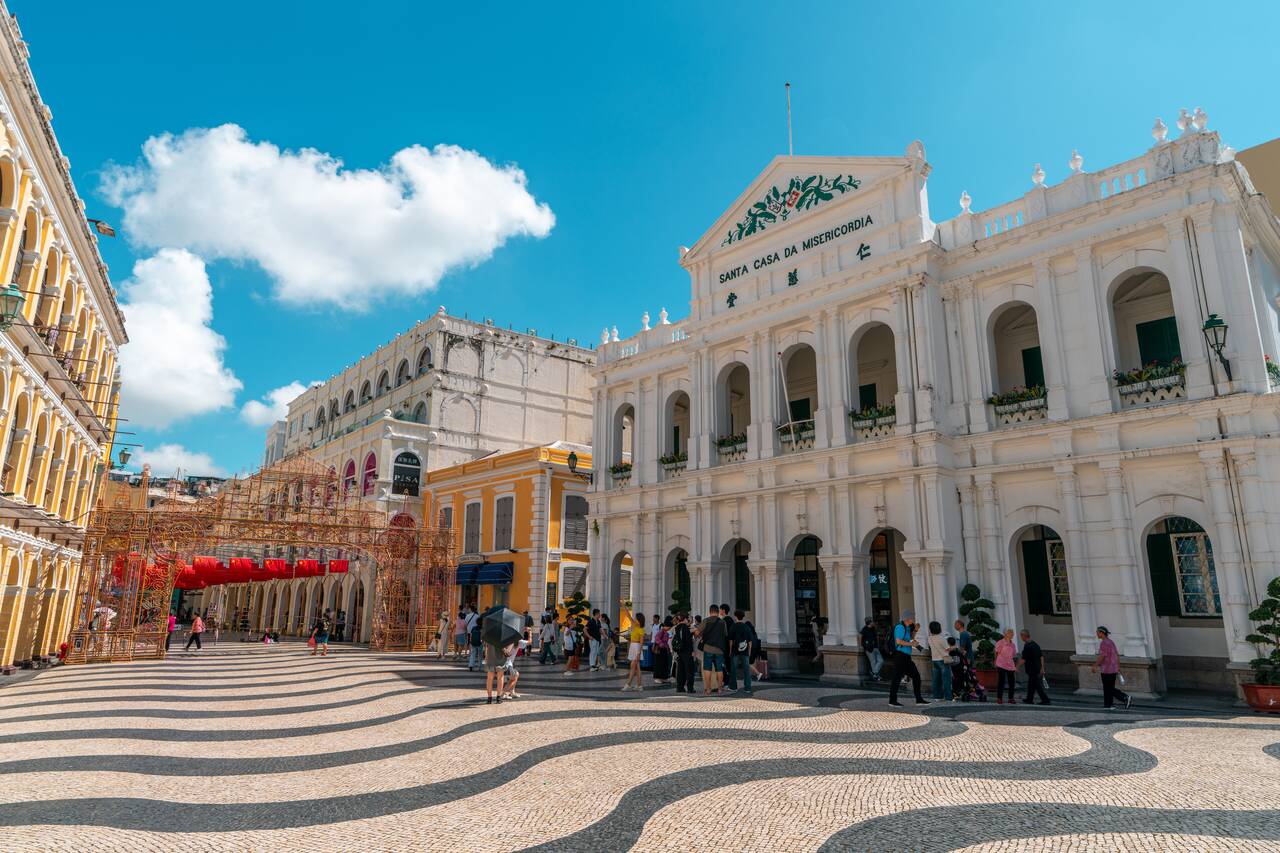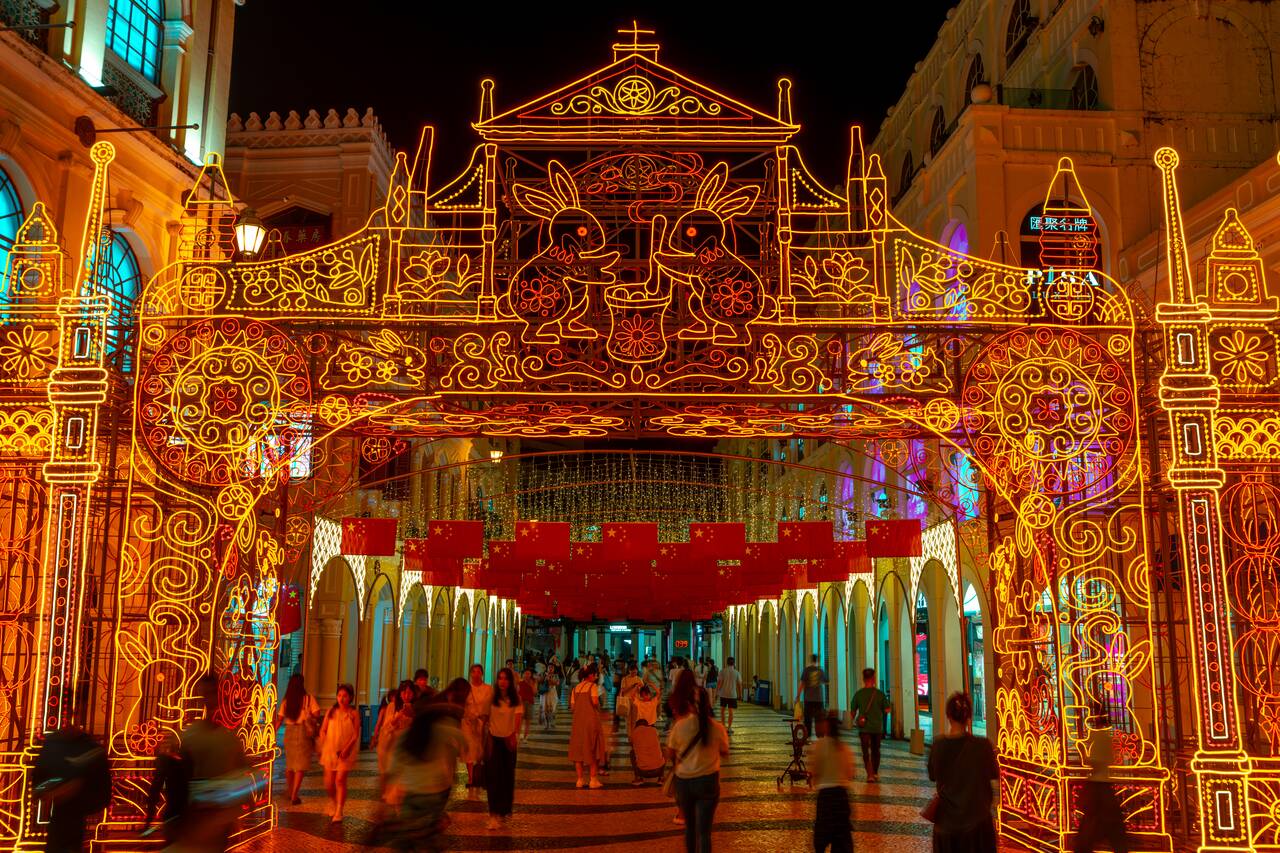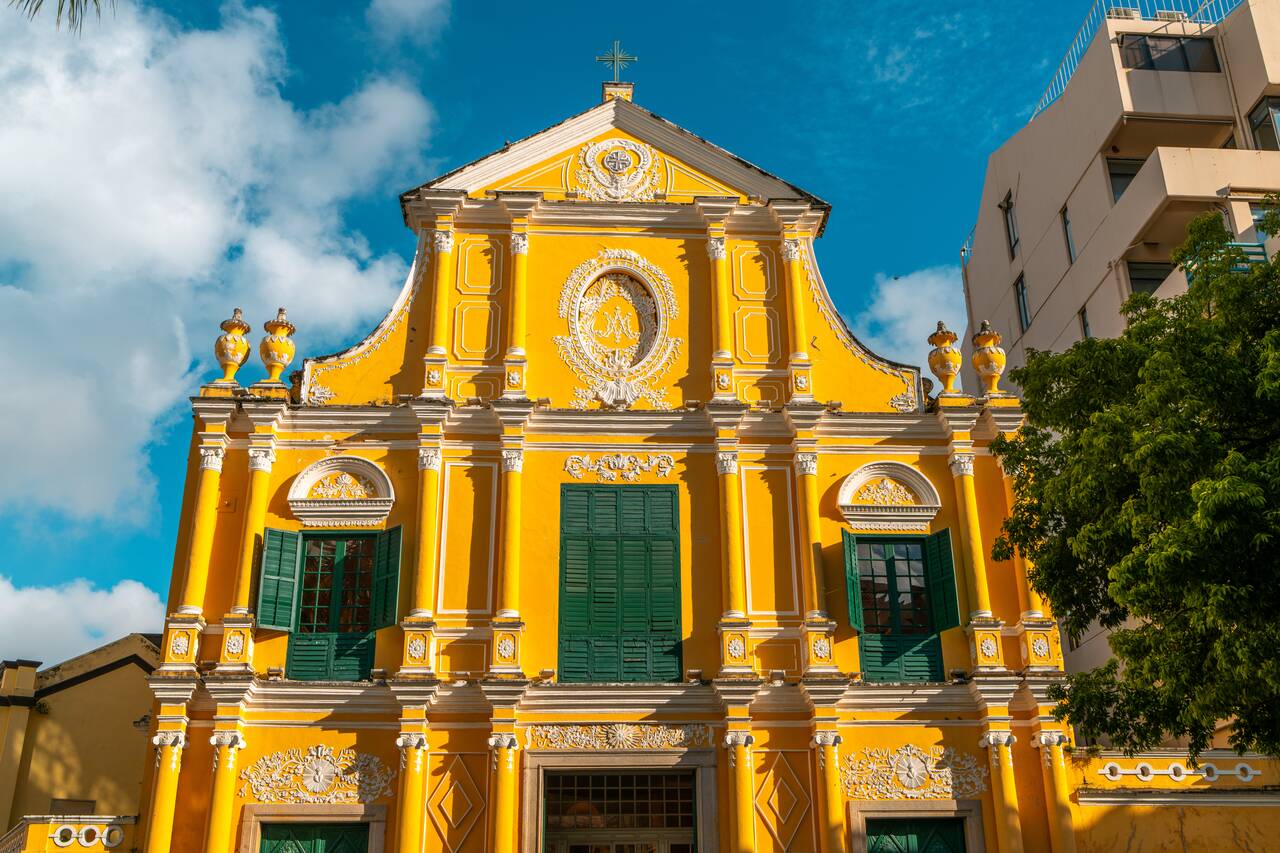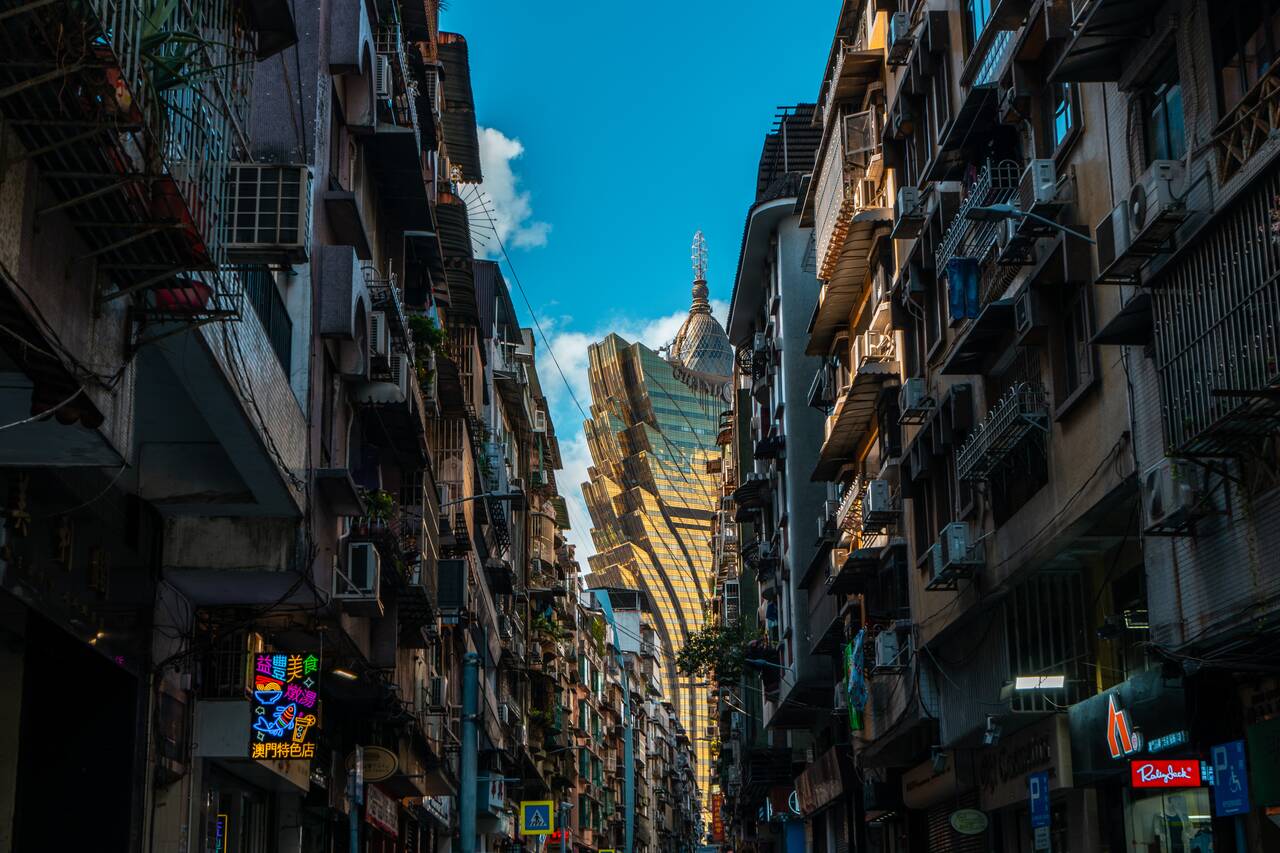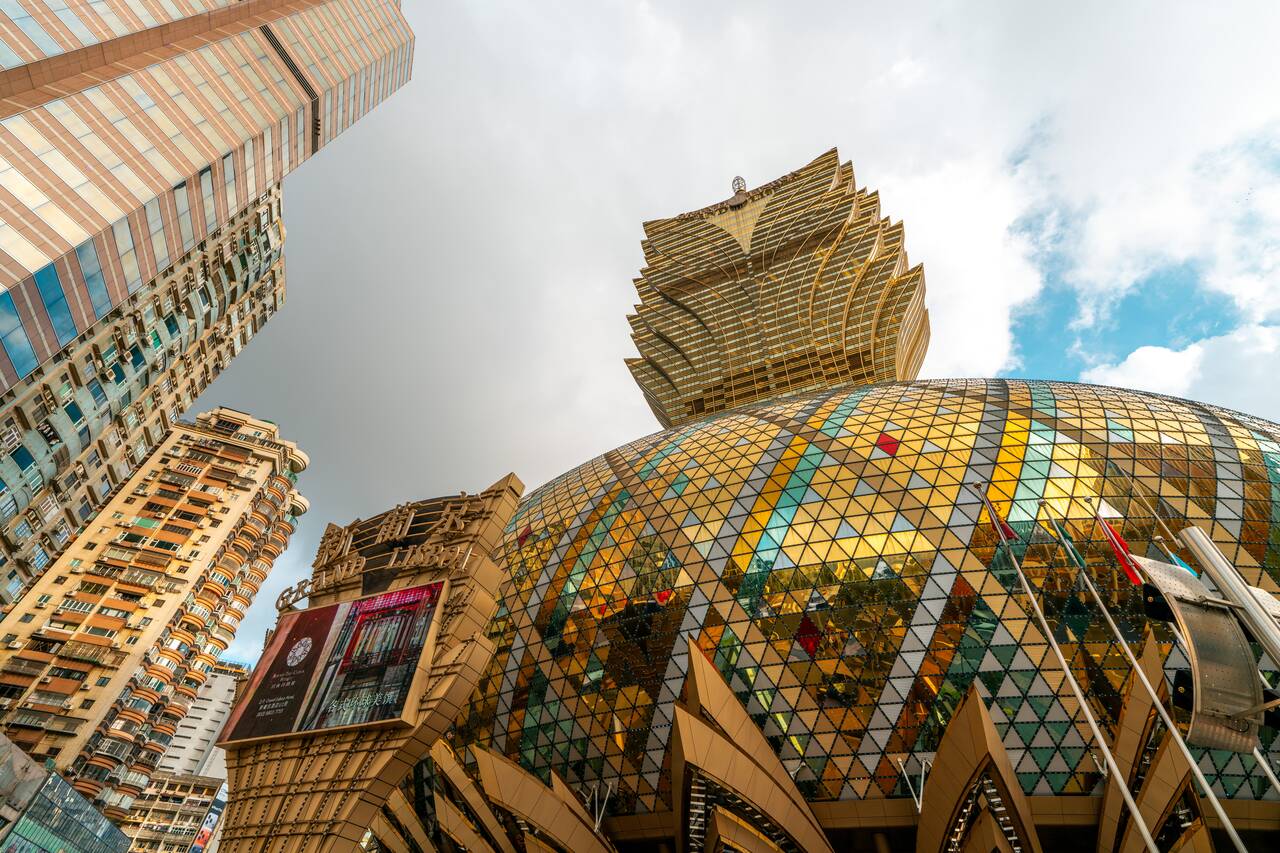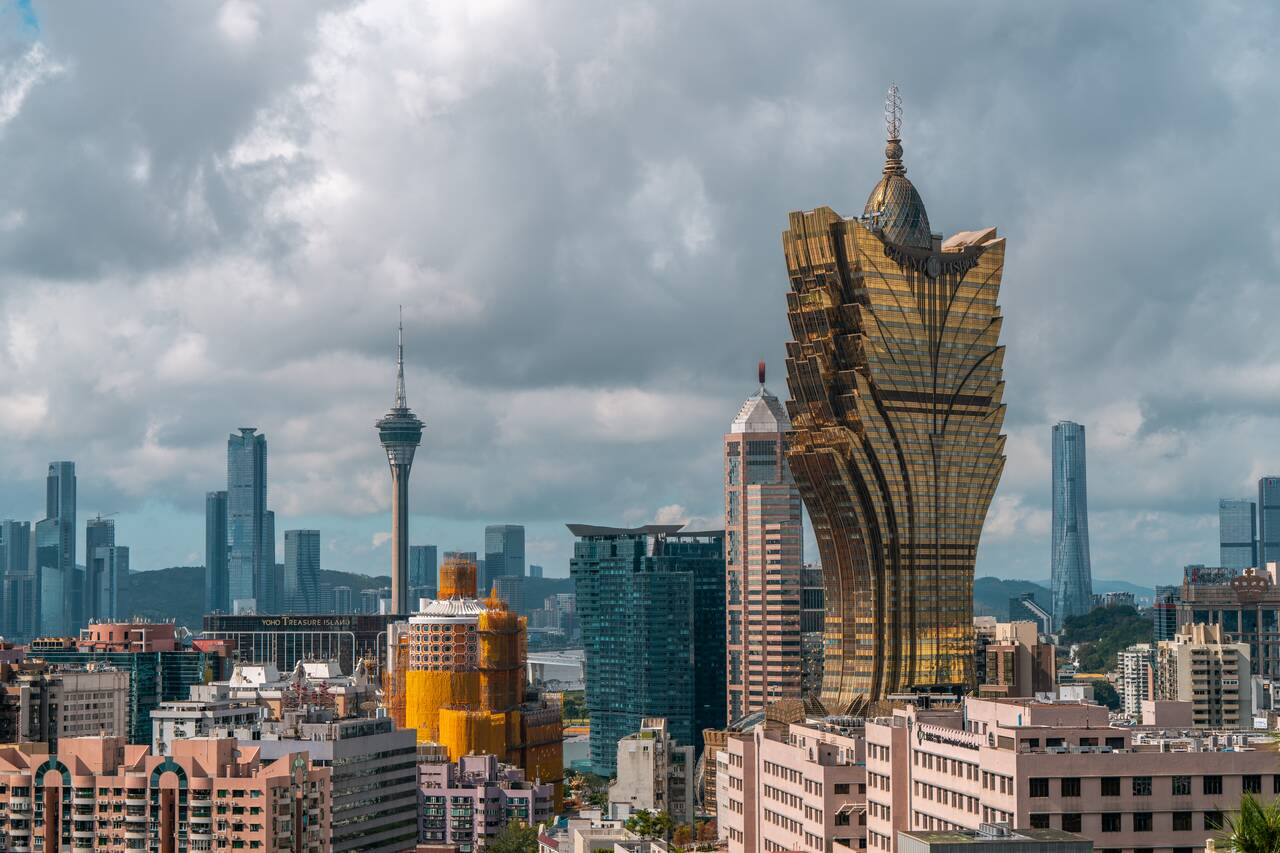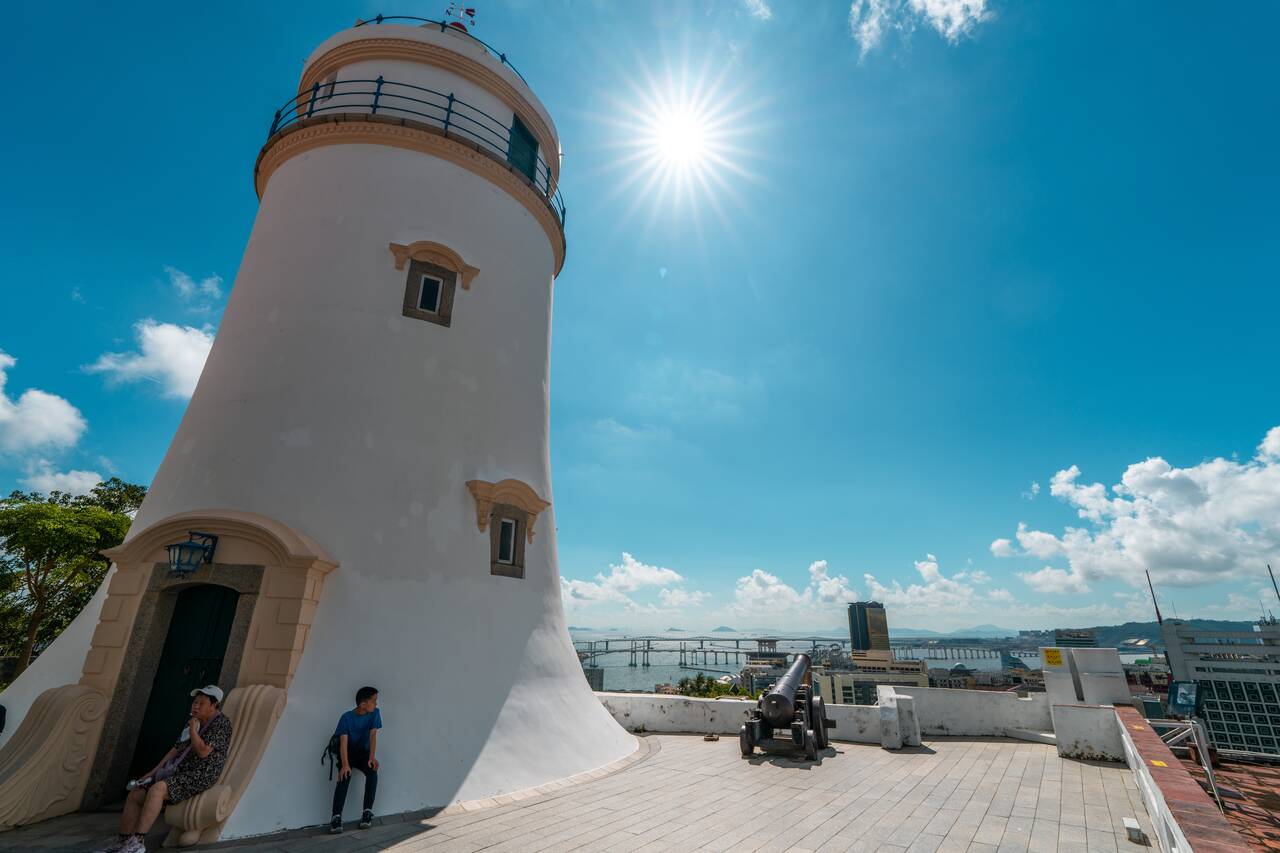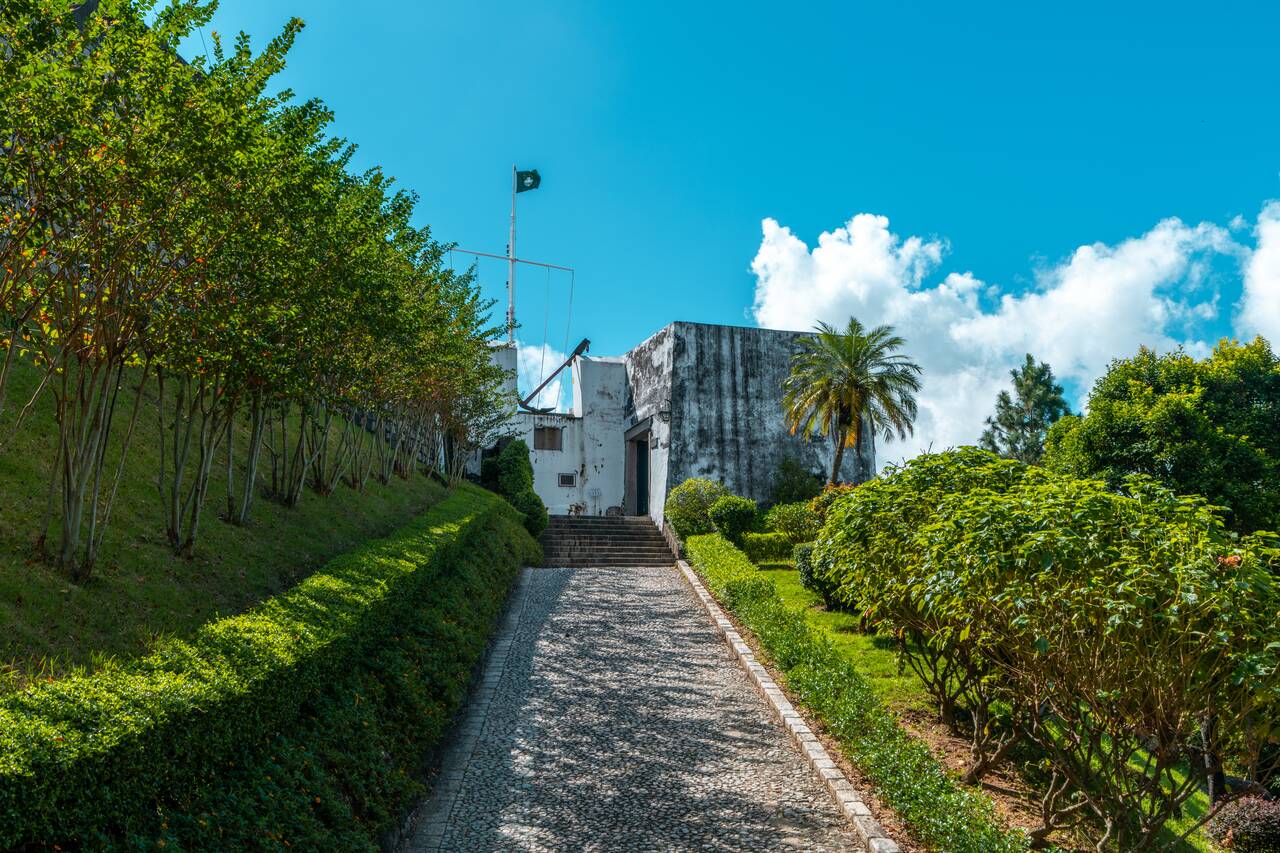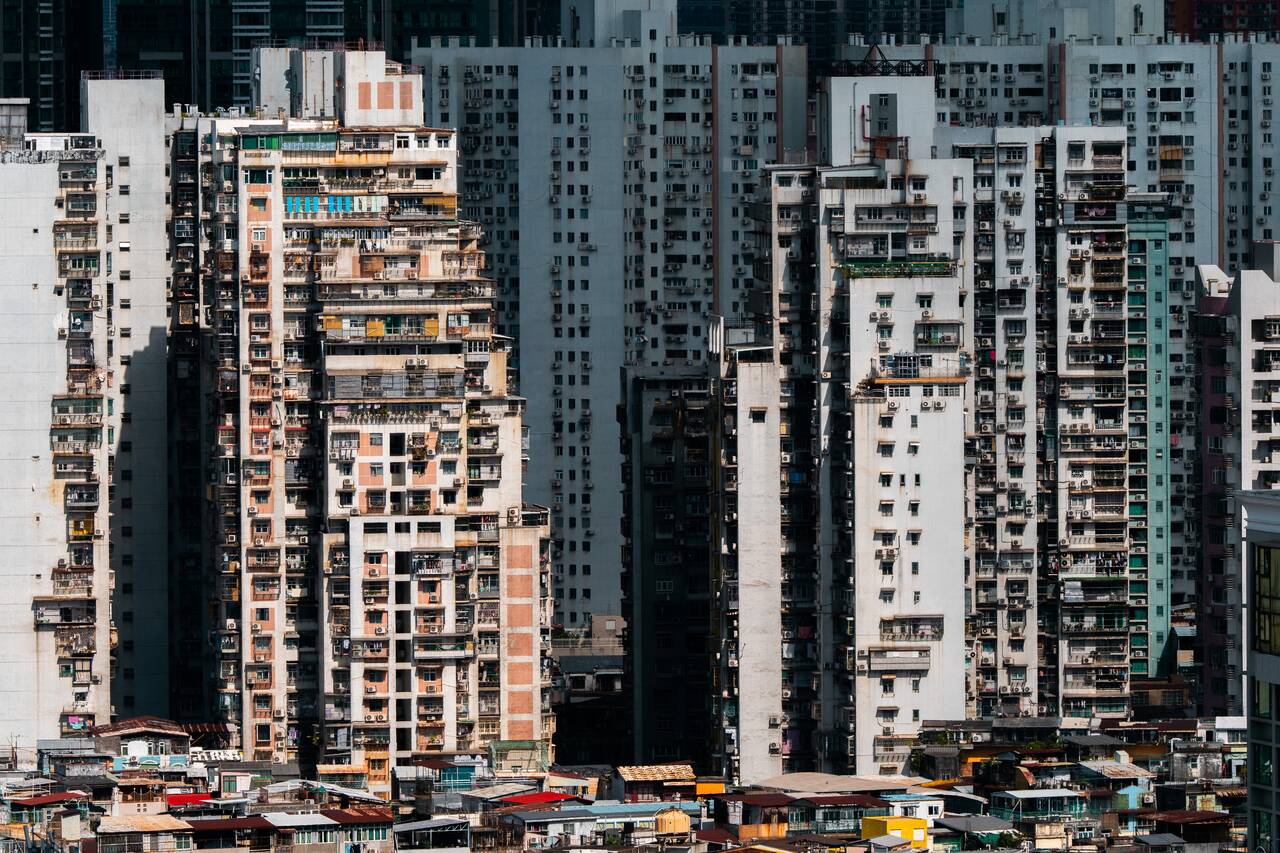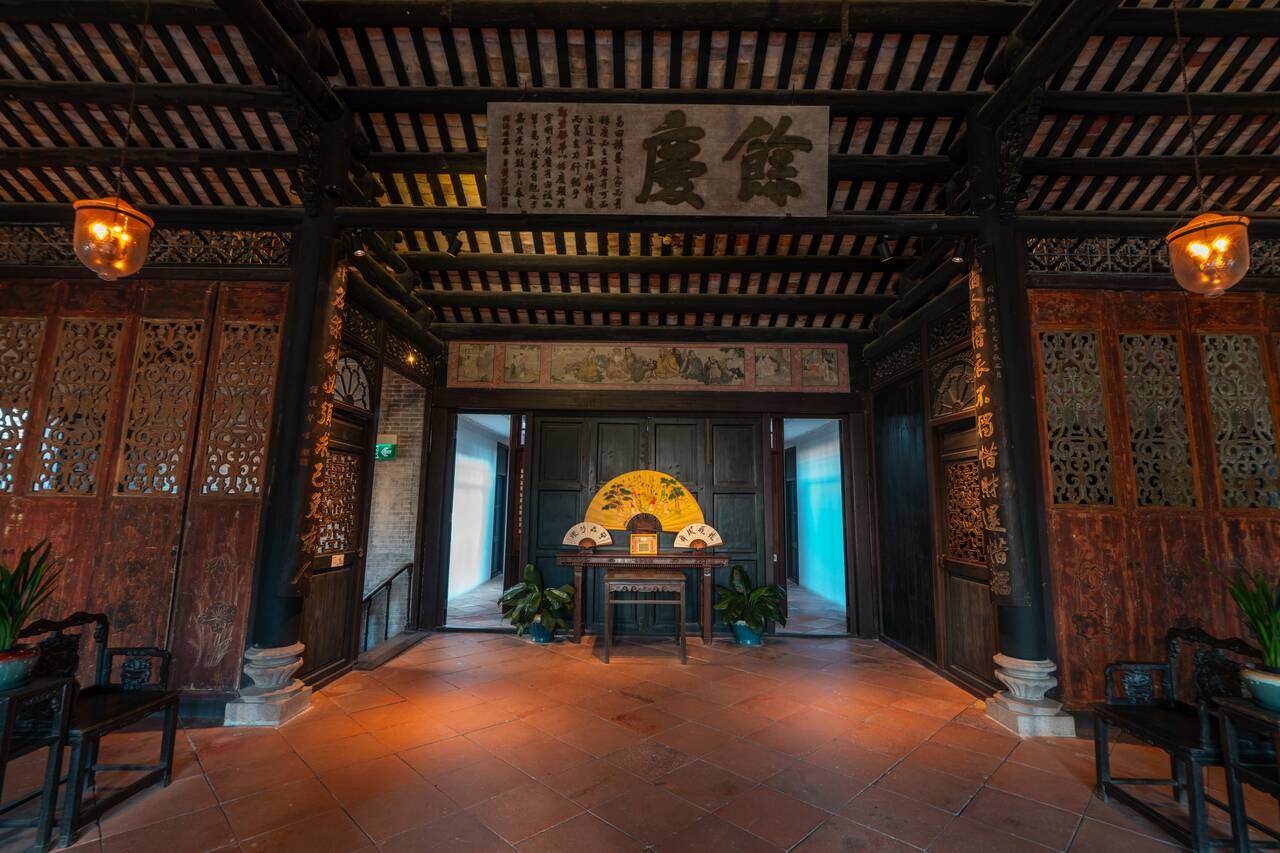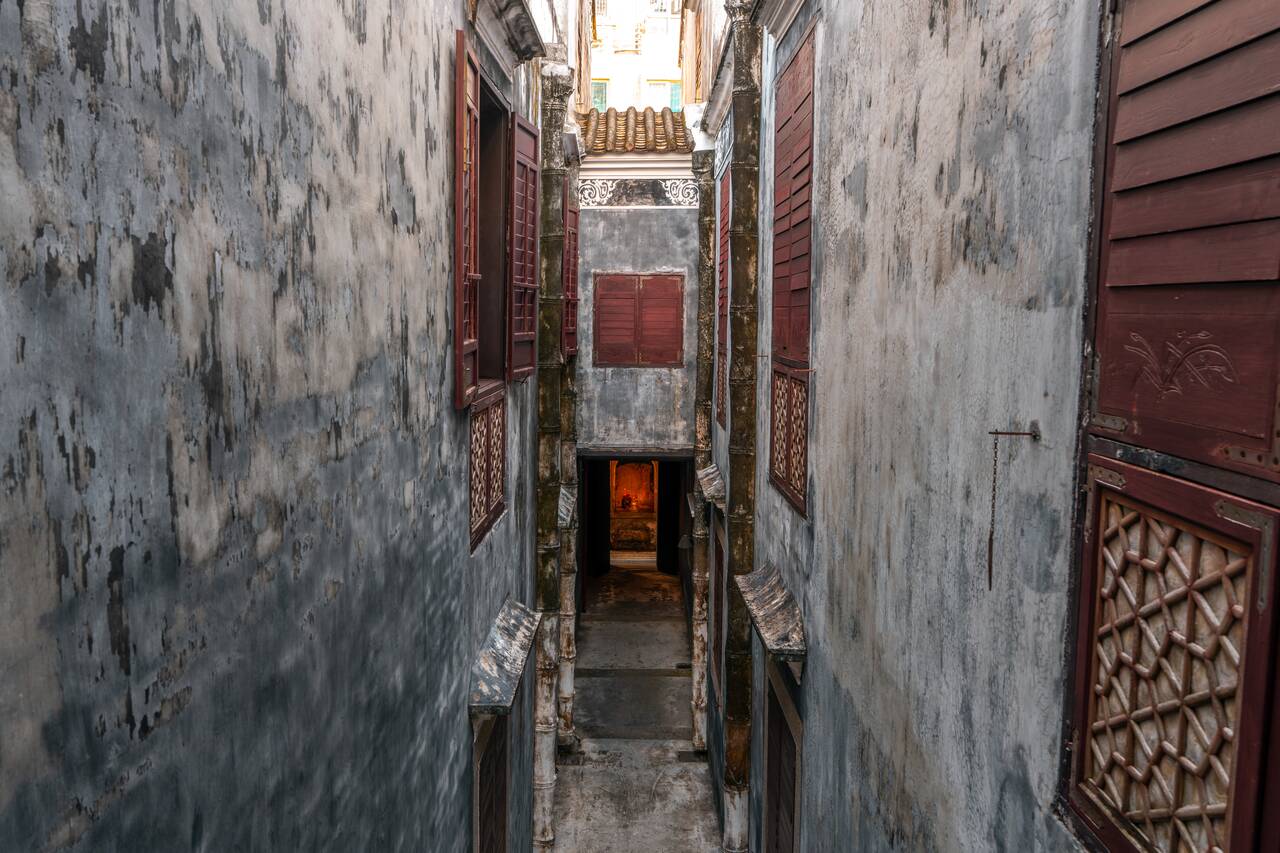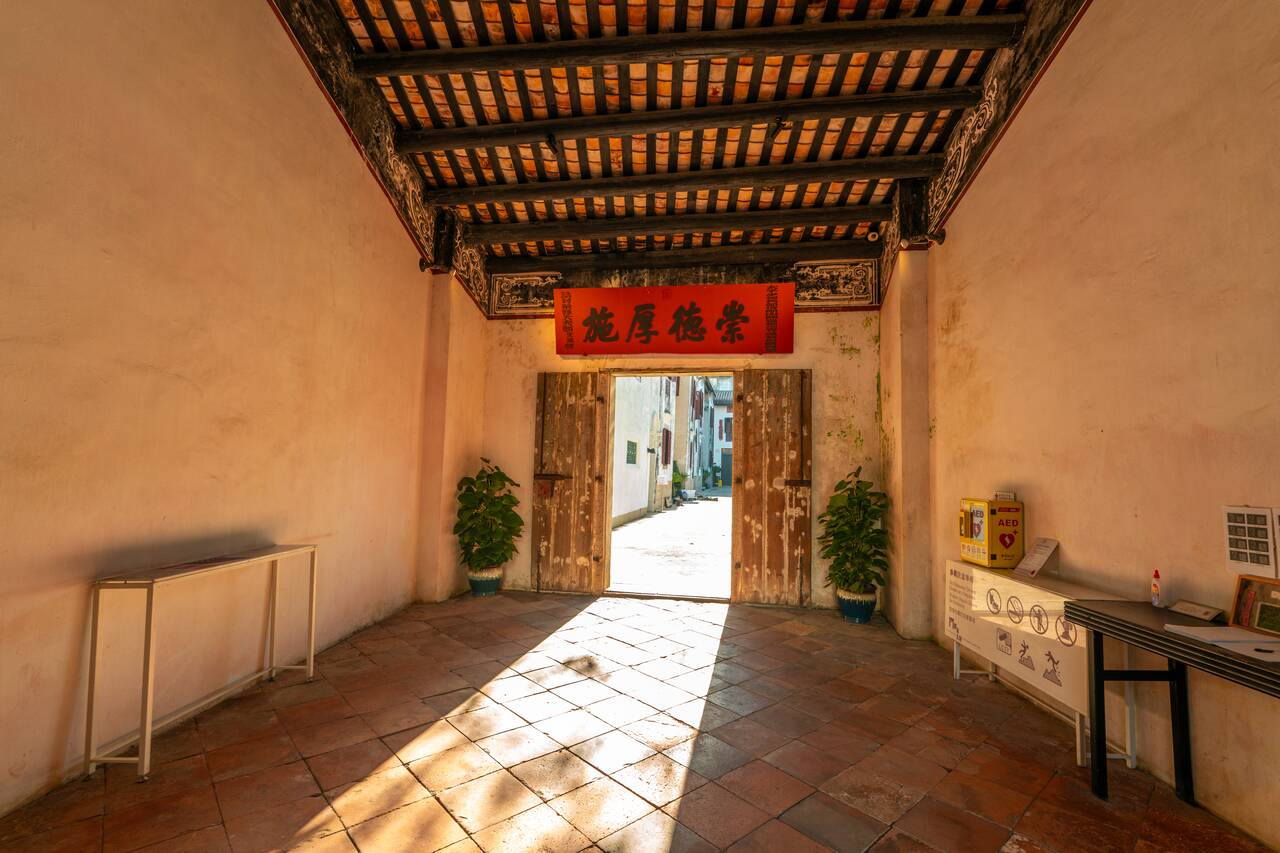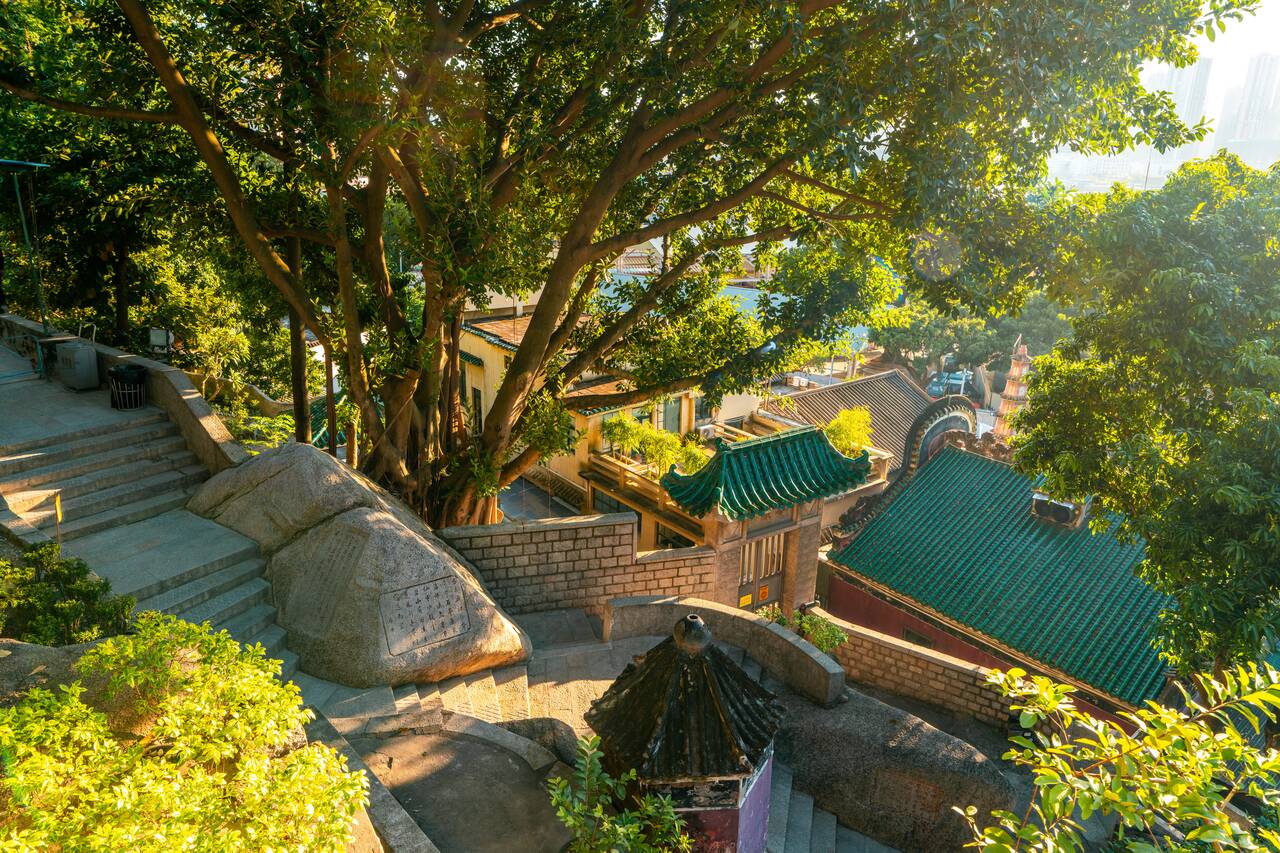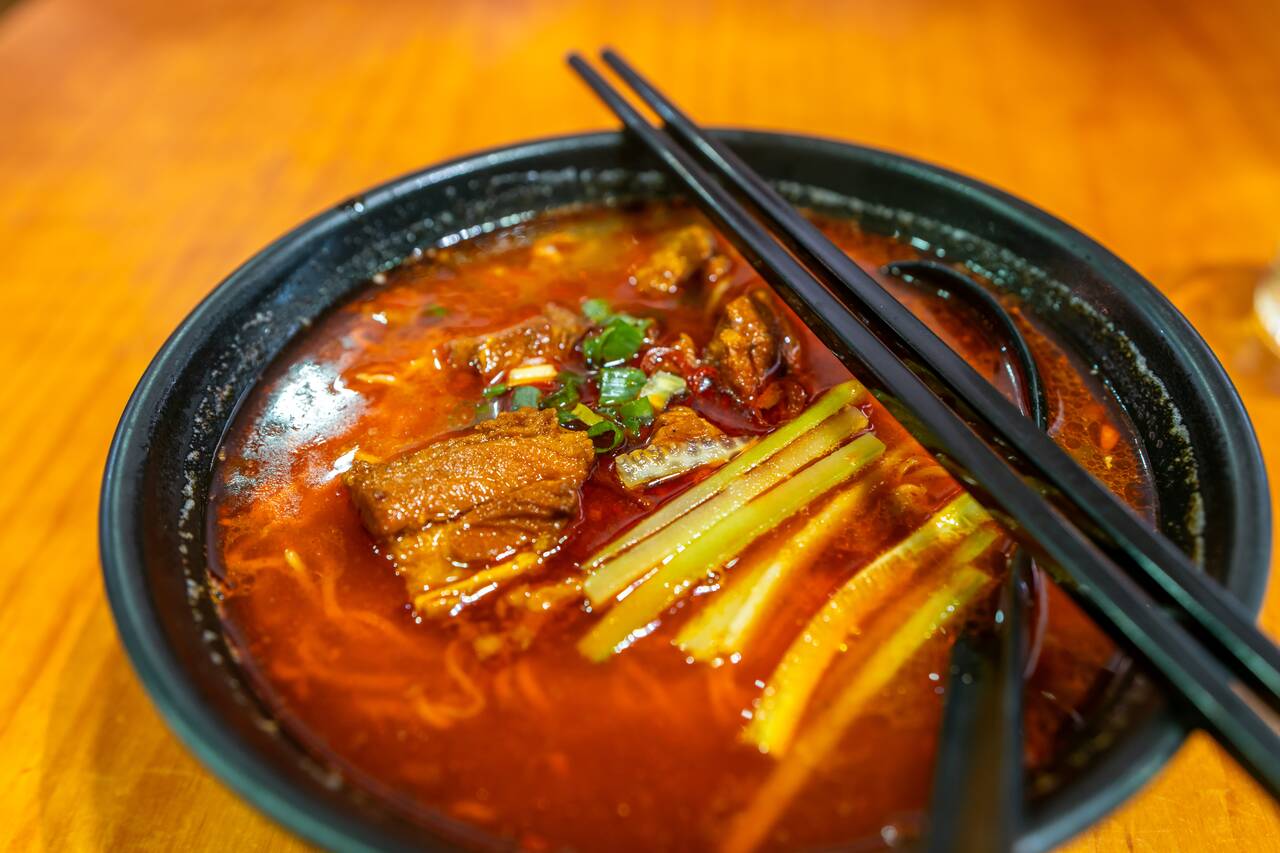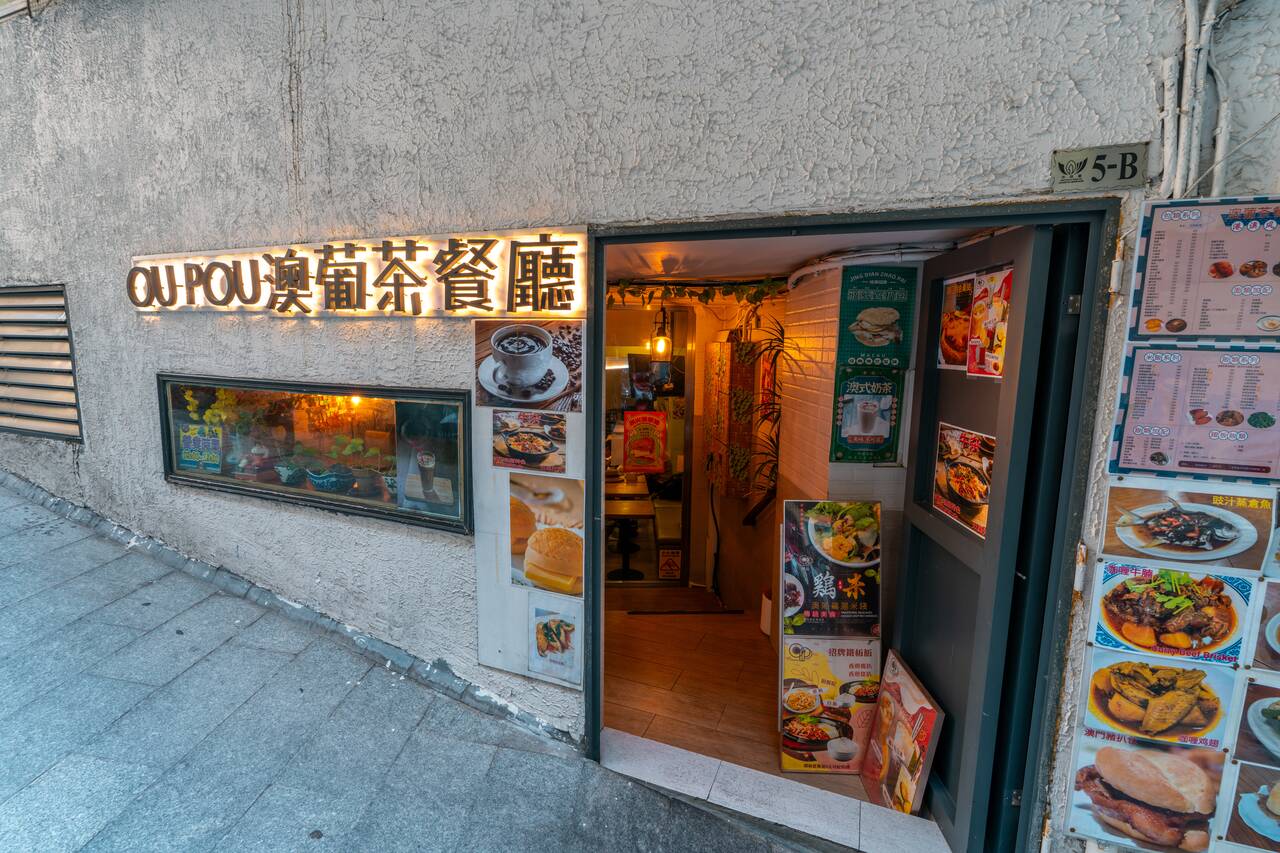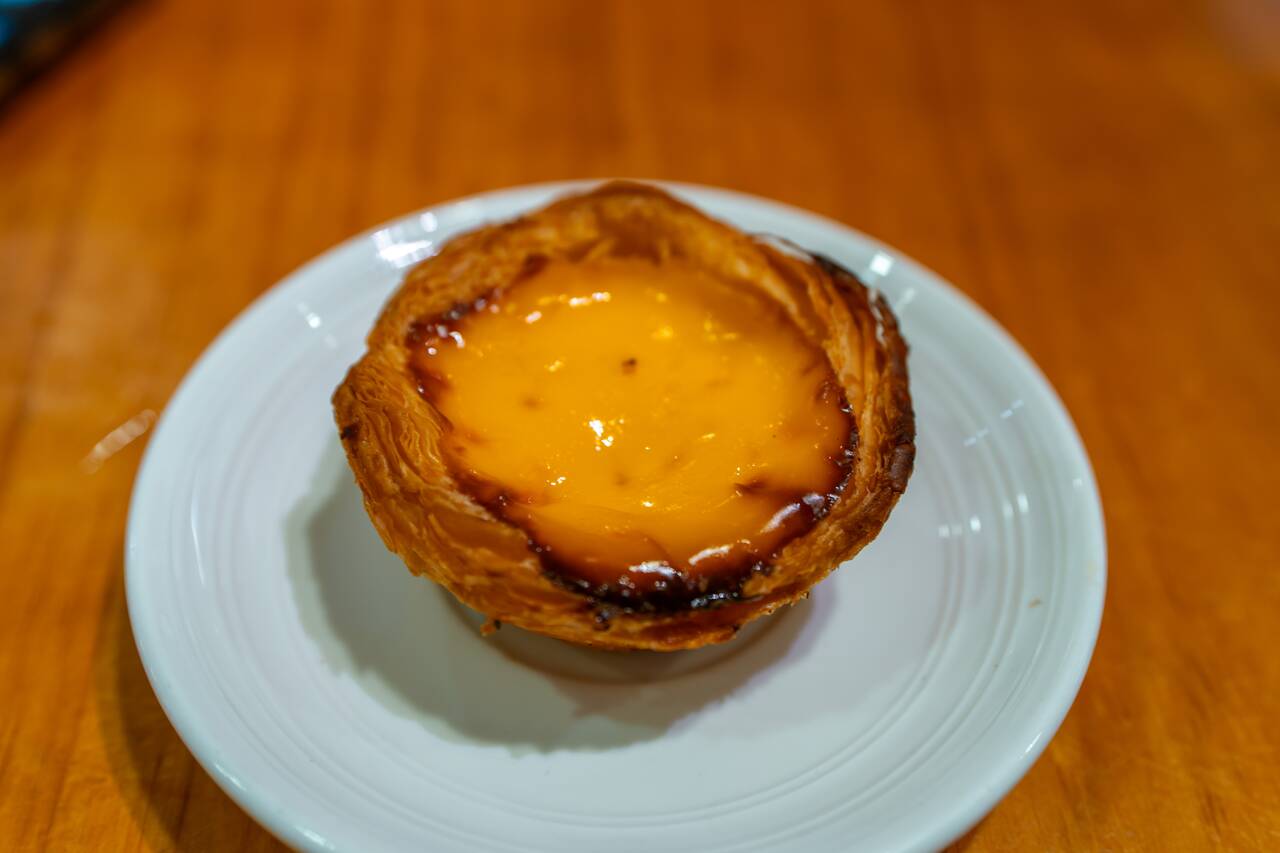Macau is often referred to as the Las Vegas of Asia, and for good reason, with its glittering casinos, luxury resorts, and larger-than-life entertainment. But beyond the bright lights, the city offers a unique blend of Portuguese heritage, Chinese culture, and charming old-town streets that make it far more than just a destination for gamblers.
In this guide, I’ll show you not only the glamorous side of Macau but also the historical, relaxed, and often overlooked corners of the city. So without further ado, here is your complete travel guide to Macau!
- Macau Things to Do Map
- Where to Stay in Macau?
-
10 Best Things to Do in Macau
- Check Out the Over-the-Top Casinos at The Cotai Strip
- Hang Out at the Ruins of Saint Paul's
- Enjoy the View from Monte Fort
- Enjoy the European Architecture at Senado Square
- Admire the Beauty of St. Dominic's Church
- Take Photos of the Iconic Casino Lisboa
- Hang Out at Lou Lim Ioc Garden
- Hike Up to Guia Fortress and Lighthouse
- Visit Mandarin's House
- Check Out A-Ma Temple
- What to Eat & Drink in Macau?
- How to Get to Macau?
- How to Get Around Macau?
- What to Pack for Macau?
- Further Reading for China, Hong Kong, and Macau
Macau Things to Do Map
10 Best Things to Do in Macau
1. Check Out the Over-the-Top Casinos at The Cotai Strip
Of course, one of the biggest draws of Macau is its luxurious casinos and larger-than-life entertainment, featuring Las Vegas–style replicas of famous landmarks from around the world but with their own glamorous twists. Most of them are concentrated around the Cotai Strip, which I highly recommend visiting.
Even if you’re not into gambling (personally, I’m not interested in it either), you’ll still find the outrageous architecture and dazzling light shows fascinating to see. From the Eiffel Tower to Big Ben, from Venice-themed shopping malls to a replica of the Vatican’s Gallery of Maps, you’ll find them all along the Cotai Strip.
Since the casinos are located on Cotai Island, you should be able to reach here easily by bus. The place is definitely best visited at night when the buildings are beautifully lit with dazzling lights! It's really quite a sight to behold!
- London Hotel (Budget)
- Caravel Hotel (Mid-Range) 👍 Top Pick
- Mandarin Oriental, Macau (High-End)
- Macau Private Tour with an Insider (4 hours)
- Guided Macau Sightseeing Tour from Macau Hotels (5 hours)
- Macau Hop-On Hop-Off Open Top Bus Tour (2-3 hours)
There are three main attractions that I really love here. First is the Venice-themed shopping malls with the fake canals that you often see in photos and videos. You can even pay to be taken around in Venice-style boats along these canals. It’s very gimmicky, and I love it 😂. It’s so unapologetically over-the-top that you can’t help but be impressed by their determination!
Another iconic landmark is Big Ben, which is very beautiful to see at night. It almost feels like Hogwarts with its orange-hued exterior. The Eiffel Tower is also very cool, with light shows and music being performed every hour or so for you to enjoy.
Of course, these places do house a casino as well as shopping malls and they are all interconnected via bridges and walkways, so you can easily navigate all of them without touching the streets below. It's pretty massive and requires quite a lot of walking, so be sure to prepare for it.
These casinos are open 24/7, with some shops in the shopping malls staying open late into the night. I visited around 10 PM, and the whole area was still packed, with a handful of shops still operating, which was pretty impressive. I highly recommend visiting the Cotai Strip from around 8 PM onward to avoid the rush hour.
Where to Stay in Macau?
2. Hang Out at the Ruins of Saint Paul's
While many people talk about Hong Kong and its unique blend of Chinese and British influences, Macau also has its own distinct identity, shaped by Portuguese rather than British rule, and one of the finest remnants of the Portuguese presence here is the Ruins of Saint Paul's, probably the most iconic landmark in the city.
Originally built in the early 17th century as part of St. Paul’s College and the Church of Mater Dei, the complex was one of the largest Catholic churches in Asia. Today, all that remains is the impressive stone façade, standing proudly atop a flight of steps, allowing you to get a glimpse into Macau’s colonial past and providing a great place to hang out both during the day and at night.
If you want to take photos here without the crowds, I highly recommend visiting early in the morning when far fewer people are around. In the afternoon and evening, it can get quite crowded quickly. That said, you might also want to swing by here at night when the area is beautifully lit and many people gather on the steps, enjoying the lively city's vibe.
Located behind the ruins, you will find the Museum of Sacred Art and Crypt, which is a small museum that showcases religious artifacts and relics from the original church. The museum is open from 9 AM to 6 PM daily and the entry is free. If you want to get more context on the site’s historical and cultural significance, be sure to go check it out.
3. Enjoy the View from Monte Fort
Located right next to the Ruins of Saint Paul's, you will find Monte Fort, a historic fortress built by the Portuguese in the early 17th century on top of a hill overlooking the entire old town area to protect Macau from invasions.
At the time, Macau was a vital trading port under Portuguese administration, and the city needed strong fortifications to safeguard its wealth and strategic location. During its active years, Monte Fort played a crucial role in defending Macau against attacks, including the attempted Dutch invasion in 1622.
Nowadays, the fort has been well-preserved, and you can walk along its sturdy stone walls, explore the old watchtowers, and admire the 17th-century architecture that reflects Macau’s Portuguese heritage. You can also get a pretty stunning view of the city from here.
The fort is surrounded by a beautiful park, and it’s just a short hike up from the Ruins of Saint Paul’s before you reach its formidable gate, making it a perfect stop after visiting the ruins. Inside the fort, you’ll also find the Macao Museum, where you can learn all about the fort’s history as you explore.
The fort is open daily from 7 AM to 7 PM, and entry is free. If you’re looking for a great viewpoint not far from the city center, be sure to hike up Monte Forte. From the top, you can see the Ruins of Saint Paul’s as well as other iconic structures like Casino Lisboa and more, all from above. You won’t regret it!
4. Enjoy the European Architecture at Senado Square
If you’ve just arrived in Macau and aren’t sure where to start exploring, I highly recommend beginning at Senado Square. This famous public space, a UNESCO World Heritage site, connects many of Macau’s top attractions, including the Ruins of Saint Paul’s and Monte Forte, via a lively shopping street. Starting your walk here makes it easy to eventually reach these two iconic landmarks while you enjoy the lively atmosphere.
The square is famous for its European-style architecture, which is a lasting influence of Portuguese rule, and its distinctive wave-patterned mosaic pavement. Along both sides, you will find pastel-colored colonial buildings, shops, cafés, and restaurants lining the entire shopping street.
If you are lucky, you might also be able to enjoy the festive events that are often held there. I was there during the Chinese week-long holiday, the Golden Week, and the entire square was lit up with beautiful lanterns and art installations. It was definitely quite a sight to behold.
5. Admire the Beauty of St. Dominic's Church
As you stroll along the shopping street at Senado Square, you’ll eventually come across St. Dominic's Church, a stunning pastel-yellow Baroque-style church often considered one of the most beautiful in Macau.
Built in the 16th century by Spanish Dominican priests, it has played a significant role in preserving Catholicism in the city and remains important to the Catholic populations still living here. In the morning, you will often see the place filled with people attending the morning service.
You can only enter after the service is over, so be sure to visit in the afternoon if you want to see the interior. Inside, the church is stunning, with the same pastel colors from its façade carried through the walls, which are adorned with intricate religious art and gold accents. The place is open from 10 AM to 6 PM daily except on Wednesday and it is free to enter.
6. Take Photos of the Iconic Casino Lisboa
Another iconic landmark in Macau, visible from almost anywhere in the city, is Casino Lisboa. This famous casino is known not just for its gaming floors but also for its distinctive, flamboyant architecture, featuring a golden exterior and a wavy structure unlike any other skyscraper you’ve seen.
Originally opened in 1970 and later expanded, the building is topped with a unique, golden lotus-shaped dome, symbolizing prosperity and good fortune. Its exterior combines modernist design with bold, eye-catching shapes, and it has dominated Macau’s skyline for decades, continuing to do so even today.
If you’re into photography, here’s a little secret (not so secret). The best spot to capture this building is from this street, where you can frame the golden lotus-shaped structure between two old buildings, creating an incredible urban composition for your shot. I accidentally stumbled upon this street as I was exploring the city, and boy did I have a field day with it.
Be sure to use a telephoto lens to bring the casino closer and tighten the frame around the surrounding buildings. It makes for an incredible photo. If you’re not into photography, you can still walk around and admire the casino’s flamboyant architecture or even try your luck inside. Like most casinos in Macau, it’s open 24/7, but the area is at its most lively at night, so plan your visit accordingly.
7. Hang Out at Lou Lim Ioc Garden
If you are looking for a nice quiet place to relax and enjoy a bit of nature in the middle of the city, you might also want to drop by and check out Lou Lim Ioc Garden, a small zen garden where one can escape the bustle and hustle of the city and enjoy a peaceful and quiet walk around nature.
Built in 1906 by a wealthy Chinese merchant, the garden features traditional Chinese landscaping with winding paths, rockeries, ponds, and pavilions, creating a peaceful retreat. It offers city residents, especially retirees, a chance to enjoy a touch of nature without having to travel far.
The garden is located not too far from the historic center and Guia Fortress and Lighthouse, which makes for a great rest stop before you begin the hike up Guia Fortress and Lighthouse. The garden is open from 6 AM to 12 AM daily, and the entry is free.
8. Hike Up to Guia Fortress and Lighthouse
If you are looking for a little bit of fun activities to do in Macau that involve a bit of hiking, you are going to love Guia Fortress and Lighthouse. The place is considered Macau’s largest and oldest military fort, which was built in the 17th century by the Portuguese to defend the city from pirates and foreign invasions.
The fort is perched on top of Guia Hill, the highest point in Macau, rising above the city at around 93 meters (305 feet). From here, you get a pretty epic vantage point not just over the historic center but also from the other side overlooking the ocean. You can even see the massive infrastructure that is the Hong Kong–Zhuhai–Macau Bridge from here.
At the top of the hill stands the Guia Lighthouse, which is the oldest modern lighthouse on the Chinese coast. Still operational today, it has guided ships safely into Macau’s harbor for centuries. The hill is surrounded by lush greenery and winding paths, and it will take you about 30 minutes to get from the historical center to the top of Guia Hill.
It's a fun hike that will take you away from the crowded streets of the city center while also rewarding you with a great view of the entire city from above. If you are looking for a little adventure to enjoy in Macau, be sure to hike up to Guia Fortress and Lighthouse.
While the park surrounding Guia Hill is open 24/7, the fort and lighthouse are open daily from 10 AM to 5 PM, and entry is free. When you arrive at the park, be sure to head north and follow the road to reach the fort’s entrance quickly. Do not follow the joggers and runners because they usually circle around the fort instead of going up to it. Speaking from experience here 🤣🤣.
9. Visit Mandarin's House
From the historical center, if you continue south, you will find Mandarin's House, a historic residential complex, once home to Zheng Guanying, a prominent 19th-century Chinese scholar and reformist, where you can stroll around and admire its beautiful decorations and artifacts.
Built in the mid-19th century, the house is a fine example of traditional Chinese courtyard architecture mixed with subtle Western influences, reflecting Macau’s unique East-meets-West heritage. The complex consists of multiple courtyards, pavilions, and decorative elements, where you can explore.
From intricately carved wooden doors and ornate windows, to elegant corridors decorated with stunning artifacts, you will be able to get a glimpse into the traditional lifestyle of wealthy Chinese families during the Qing Dynasty here.
I really enjoyed exploring Mandarin's House. It wasn't crowded when I was there, and the evening light was just perfect for photography. If you love history, you are going to love exploring Mandarin's House. The place is open from 10 AM to 6 PM daily except on Wednesday, and the entry is free.
10. Check Out A-Ma Temple
A little further south from Mandarin's House, you will also find A-Ma Temple, one of Macau’s oldest and most famous temples, dating back to 1488. It is dedicated to Mazu, the Chinese goddess of seafarers and fishermen, who is said to have protected the sailors that founded Macau. The temple’s name is believed to be where the city of Macau itself originated.
The temple complex consists of multiple pavilions, halls, and courtyards, each featuring intricate Chinese architectural details, ornate carvings, and colorful decorations. Once you enter the temple, you can explore the various halls, offer incense, and admire the traditional craftsmanship as you make your way up the rocks behind the temple for a nice panoramic view of the nearby harbor.
The temple is open from 8 AM to 6 PM daily, and entry is free. If you love Chinese architecture and history, you are going to enjoy exploring A-Ma Temple.
What to Eat & Drink in Macau?
1. Eat at Ao Pu Restaurant
One of my favorite restaurants in Macau is Ao Pu Restaurant, a local restaurant located not too far from Senado Square, tucked away in a basement of a small street, and they serve all kinds of local dishes like spicy beef noodles, brisket sandwiches, egg tarts, and more.
The food was really good and quite affordable. The menu is all in Chinese, though, which is often a good sign that you are not at a tourist trap restaurant, so be sure to have Google Translate ready. Their brisket noodle and sandwiches are awesome, as well as their egg tarts.
If you are looking for a nice restaurant to have lunch or dinner in Macau, be sure to come and check out Ao Pu Restaurant. The restaurant is open from 9 AM to 7 PM daily.
How to Get to Macau?
By Plane: The fastest way to get to Macau is to fly into the country directly via Macau International Airport (MFM), and airlines like AirAsia do have good coverage all over Asia.
You can also fly into Hong Kong via Cathay Pacific if you are coming from Europe or the US, and you can transit to Macau inside the airport via the Hong Kong–Zhuhai–Macau Bridge (HKZMB). It's well-signed throughout and very straightforward. When I was there, it was free as it was during the Golden Week, but usually, the transit will cost you about 65 HKD and takes 45 minutes.
You can find cheap flights to Macau or Hong Kong from Trip.com, Skyscanner, or Expedia.
By Ferry: If you are already in Hong Kong, you can also take a high-speed ferry from Hong Kong Macau Ferry Terminal to Macau Outer Harbor. It costs around 200 HKD and takes a little under an hour. You can book the ticket in advance here.
By Bus: If you can spare some time and would like to save a bit of money, you can also travel from Hong Kong to Macau by bus from several spots in the city. The bus will take about 3 hours in total as you will have to go through 2 immigrations and it should cost about 150 HKD. You can also book the ticket in advance here.
How to Get Around Macau?
By Walking: Macau is surprisingly walkable as long as you stay within the peninsula area, not Taipa. If you want to go further, you will have to rely on local buses.
By Bus: Macau’s main public transport is its local bus system, which is how most people get around the city. You can use Google Maps to check routes and stops. However, I feel the system is a bit outdated as they only accept cash, and you must pay the exact fare of 5 MOP (HKD is also accepted). There’s no change given, so make sure you have small notes ready. Buses also get crowded during rush hour, so expect a tight squeeze.
From the airport, taking the bus into the city is straightforward. The main issue is having the exact fare. It’s best to withdraw money at an ATM first, then stop by a café to break your larger notes. When paying, ask specifically for a 5 MOP note so you’re prepared for the bus.
What to Pack for Macau?
As you may already know, I am an advocate of light traveling, and indeed, packing light for a journey like this is a unique art form. Here are some packing tips for your upcoming trip to Macau:
- Walking/Hiking Shoes: With all the walking and possible hiking during your travel, a comfortable pair of shoes is a must. I recommend the Timberland 3-Eye Classic Boat Shoes that are my go-to pair for long strolls and hikes.
- Breathable Shirts: Given the potential for hot weather, pack a few breathable shirts for your outdoor adventures.
- Shorts/Jeans: Anticipate lots of walking during your travels? Be sure to pack some breathable shorts and a pair of Levi's jeans for when the weather cools. For women, leggings are excellent for both hot and cold climates, so consider packing some as well.
- Outer Shell Jacket: An outer shell jacket is great for windy or rainy conditions. I highly recommend the Columbia Watertight Jacket (for women). It's lightweight, breathable, and even comes in a cool orange color.
- Microfiber Towel: A Microfiber towel is the ideal backpacker's towel due to its lightness, quick drying, and compressibility.
- Swim Suits: A swim trunk is a must-pack item if you are planning to visit Macau in the summer, just in case there is a body of water you can jump in.
- Camera: You should also pack a good camera for your trip so that you can capture all the beautiful experiences you might have. I recommend the Sony a7R V camera together with the Sony 24-70mm f2.8 GM II lens, which is probably the highest-performance camera and lens combination you can get right now.
- Power Bank: Keep your electronics charged on the go with a 20,000+ mAh Power Bank.
- Water Bottle: The Hydro Flask Trail Water Bottle is a great insulated water bottle to have with you in cities or on hiking trails. It is lightweight and can keep your water cold or warm for more than 12 hours. It's a total game-changer.
- Universal Adapter: You'll need just one universal adapter to plug in your electronics in any country you visit.
- Packing Cubes: Packing Cubes will help you save space in your backpack and keep all your belongings organized.
- Daypack: The Langly Alpha Globetrotter is my go-to everyday camera backpack. It's large enough to carry all my travel gear, and it comes with plenty of slots and pouches. Plus, it's stylish as hell!
- Large Backpack: You will need a large backpack to carry all of your stuff. I recommend the Osprey Atmos AG 65L backpack. With excellent weight distribution and a lifetime guarantee, you can't go wrong with Osprey.
For more information on what I pack in my backpack for this trip, check out: My Packing List: 60 Travel Essentials.
Now that we have all the information we need, it's time to start planning your trip! Here are some resources to help you get going:
Are you planning to travel independently? Be sure to check out my guide on How To Plan A Backpacking Trip here.
Further Reading for China, Hong Kong, and Macau
Looking for more information about your trip to China, Hong Kong, and Macau? Here are a collection of articles that you might find useful:
- For more articles about China, visit the China travel guide, or explore my guides to Hong Kong and Macau.
- Planning a trip to East Asia? Explore all my articles on the East Asia Travel Guide page.
- You can find all my Asia-related articles here: Asia Travel Guide.
- For more of my travel guides like this, visit my Destinations page.
Disclosure: This post may contain affiliate links.
